Willkommen 欢迎
Willkommen auf meinem Blog, der Vernetzung von „Kulturgut 文化财富“ mit dem täglichen Leben, einer Ergänzung zu meiner Website. Hier finden Sie regelmäßig meine Sicht des Lebens in Beijing und China, in Hamburg und Deutschland – rein subjektiv und selektiv. Ich schreibe meist auf Deutsch, setze aber auf die internationale Sprache der Bilder, weshalb auch die Tags zweisprachig sind.Viel Spaß wünscht Stefanie Thiedig.
欢迎访问我的博客,它不仅是"Kulturgut 文化财富"与日常生活的网络展现,同时也是对我个人主页的补充。在这里我会定期地以纯粹主观并带有选择性地的视角来观察北京和中国。大部分的时候我是用德语来撰写文字,但同时对图片也加注国际语言已达到标签双语效果。
由甲祝您好!
... newer stories
Samstag, 27. November 2010
The Launch – Impressions
youjia, 03:02h
Thank you all for coming to the booklaunch on Thursday, November 25th 2010, 7:30 pm at the Bookworm in Beijing of
Culturescapes China: Chinas Kulturszene ab 2000.
Culturescapes China: China’s Cultural Scene Since 2000.
Katharina Schneider-Roos and Stefanie Thiedig (eds.)
Basel: Christoph Merian 2010.
After a short introduction about the origins of the book and an overview about the content, we had three special guests on the podium: Martin Brandes, Li Yinan and Barbara Münch – who gave more details about their special disciplines. A presentation in the background was showing all the authors' article titles and the pictures inside the book.
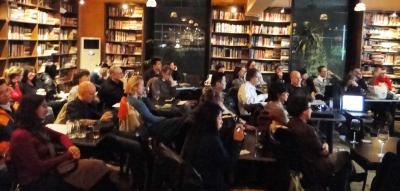
The origins
After Katharina Schneider-Roos and I first met in February 2009, the publication project is now concluded on November 2010. Our starting point was that the art scene in China and especially Beijing as the centre of culture and art was and still is on the verge of a change. We wanted to show a special perspective of the art scene through people who are actively involved, who witness the scene and participate in it – so we gathered almost thirty authors taking a ten years retrospective in the different disciplines of fine arts, film and photography, literature and theatre, music, and architecture. Our approach was commemoration – we believe that a time of reflection started and we wanted to take this to reflect ourselves, to remember the 2000s – in our own way: subjective and selective. What we were looking for was an overall structure of art works and working in the arts, and of form and content.
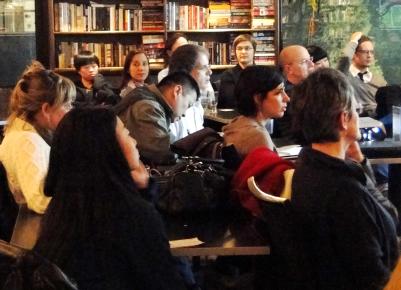
Thank you!
Katharina and I would like to express our deepest gratitude to our authors and all other contributors – we all worked for free, because we wanted to share our experiences.
Many authors also contributed photos – thank you very much! A very special photo-contribution-thank-you goes to:
- Katharina Hesse
- Shu Yang
- Uli Sigg and staff
- Doro Adam and Barbara Münch
Thank you also Cathrine Lutz and Eva Lüdi for your great translations and Johannes Schneider and your company Webducation for sponsoring 16 extra pages of color print!
My special thanks goes to Katharina who wishes us all the best regards and says hello from Basel!
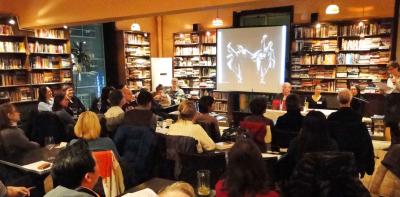
Content overview, introduction
Contemporary Chinese art has experienced a rapid hype – art and commerce approached each other, and so did the official side with the independent scene.
From 1950 until the end of the Cultural Revolution, there was no connection with the outside world in China. In the late 1970s after Deng Xiaoping’s Open Door policy, cultural basic work had to be done, where after the 1980s was a time of great social openness. Starting from universities and connected with the demand of change, everything was absorbed, which was available after China’s long isolation. A cultural fiver broke out – the New Wave.
The shock of 1989 was a relapse into the underground, followed by an inside and outside emigration in the 1990s. While many artists went abroad, those who stayed still did find a way to express themselves: the first artist's communes started, Beijing East Village and Yuanmingyuan, exhibitions in apartments of friends, experimental spaces for painting, performance art, lyrics, music and theatre in China.
In the first years of the new century, artists came out of the isolation and started to become part of the establishment. Fine arts are the prime example of the change the contemporary art scene went through: from a sub-culture in the 1990s to a cultural industry in the 2000s.
The noughties were a time of commercialisation and globalisation of apparently boundless possibilities. The time of collective exchange of thoughts and working inside groups was over, the perception of Chinese artists as individuals in the international scene had begun – away from the transfiguration of exotic romanticism.
Discussions if the beginning of commercialisation is the death of avant-garde and how prices and quality affect the work of artists are now replaced by questions of the function of art in China, of the Chinese self-consciousness, the communicated values and public education.
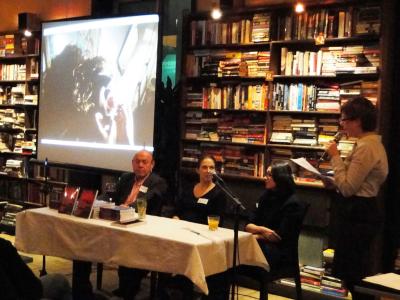
Panel discussion
According to the order of the articles in our book, we first spoke to Martin Brandes, who wrote the article about Chinese film economy. Martin lives in Beijing since 2001. Since 1975, he has been working in film distribution and in cinema and TV production, as well as writing articles for film economy magazines and his own film scripts. Martin is a script evaluator of the Pro 7/ Sat1-group, a China correspondent of various magazines, and the senior advisor of the national China Documentary Film Commission in Beijing.
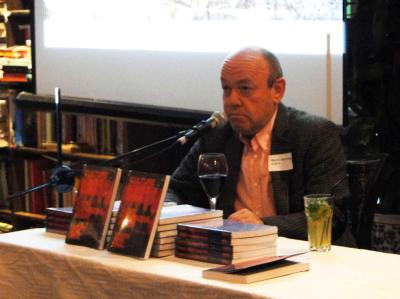
Chinese film went a long way during the past ten years. The sole status of being a propaganda instrument from the official side blurred and film became a commercial good. China is now number 3 of the film producing countries. Martin described how the commercial film market work, how strict censorship is, and what role SARFT plays. He also said a few words to how does the illegal market works. In his article, Martin describes the Chinese film economy going through massive changes in structure and focus – at the launch, he stood question and answer about figures and tendencies and also answered how the WTO accession 2001 has changed the Chinese film economy.
Our second guest was Li Yinan 李亦男, who wrote about independent theatre in Beijing. Li Yinan, who has studied German Literature, Dramatics and Sinology in Beijing, New York and Hamburg, works as a dramaturge in Beijing. She lived in Munich from 2003 working as a theatre and art critic, since 2005 she lectures in Chinese Theatre at the University of Munich, the University of Frankfurt and the Central Academy of Drama in Beijing. Since 2007, she is director of Theatre Arts in Beijing.
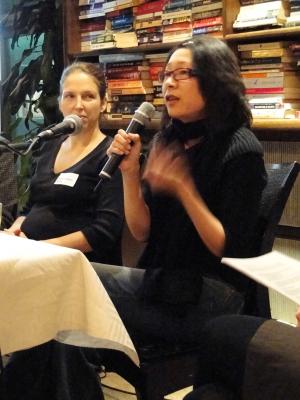
Yinan writes about young theatre people trying to find their own voice and described the current status quo and gave a quick overview about how education had changed over the last decade and what still needs to be done. There are young people coming from all over China to Beijing to see and play theatre. All they know, she says, is the few DVDs by Lin Zhaohua and Meng Jinghui. Li Yinan tells us how Beijing sticks out in being the capital for independent theatre. She has organised workshops and the new dramaturgy program at the Central Academy of Drama attempting to bring a change to the Chinese theatre scene, which she introduced to the audience.
Barbara Münch as our final guest author on the podium wrote about the contemporary architectural scene in China. Barbara studied Architecture, Economics and Engineering. Since 2000, she lectures architecture at universities in Berlin and Beijing. She is a researcher and writer about architecture and city development in China and works as an independent architect.
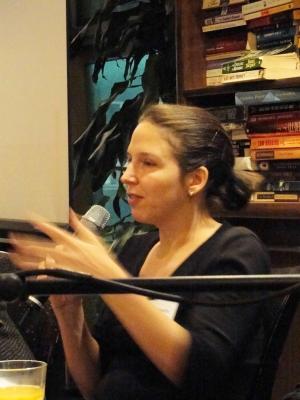
In the last couple of years, architecture has made its step from being a handicraft towards a discipline of art; exciting architecture can be found in China … Barbara talked about the still omnipresent clichee of prestige buildings by famous Western architects, described the change happening in Chinese architecture. She also spoke about how architecture helps creating a unique environment for the people – in big cities and what is going on in the suburbs and the hinterland. Moreover, she described the historic circumstances of architecture, the different views in protection of heritage: in a structural sense of how Chinese architects work in Local Design Institutes (LDIs) and independent bureaus; and in form and content if there is a Chinese architectural language.
Once again, thanks to everyone present for coming. I hope, you enjoyed the evening and went home with a few new impressions. The book is available at Amazon or contact Katharina or me directly.
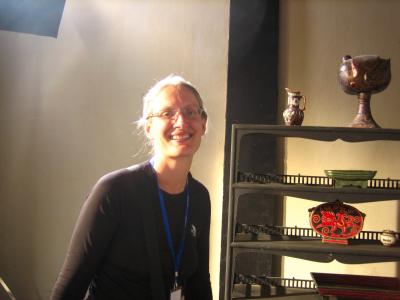
Photo provided by Katharina Schneider-Roos.
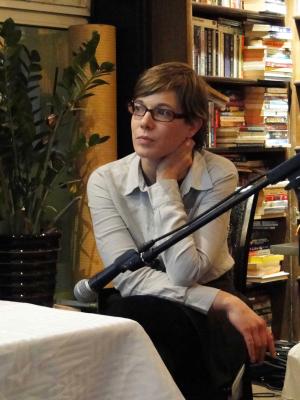
That's me, Stefanie Thiedig aka 由甲.
All pictures except the last one of Katharina were taken by Julia Odenstein.
Tags für diesen Beitrag 这本文章的标记: Architektur 建筑, Literatur 文学, Film 电影, Theater 话剧, Häufig gelesen 频看
Culturescapes China: Chinas Kulturszene ab 2000.
Culturescapes China: China’s Cultural Scene Since 2000.
Katharina Schneider-Roos and Stefanie Thiedig (eds.)
Basel: Christoph Merian 2010.
After a short introduction about the origins of the book and an overview about the content, we had three special guests on the podium: Martin Brandes, Li Yinan and Barbara Münch – who gave more details about their special disciplines. A presentation in the background was showing all the authors' article titles and the pictures inside the book.

The origins
After Katharina Schneider-Roos and I first met in February 2009, the publication project is now concluded on November 2010. Our starting point was that the art scene in China and especially Beijing as the centre of culture and art was and still is on the verge of a change. We wanted to show a special perspective of the art scene through people who are actively involved, who witness the scene and participate in it – so we gathered almost thirty authors taking a ten years retrospective in the different disciplines of fine arts, film and photography, literature and theatre, music, and architecture. Our approach was commemoration – we believe that a time of reflection started and we wanted to take this to reflect ourselves, to remember the 2000s – in our own way: subjective and selective. What we were looking for was an overall structure of art works and working in the arts, and of form and content.

Thank you!
Katharina and I would like to express our deepest gratitude to our authors and all other contributors – we all worked for free, because we wanted to share our experiences.
Many authors also contributed photos – thank you very much! A very special photo-contribution-thank-you goes to:
- Katharina Hesse
- Shu Yang
- Uli Sigg and staff
- Doro Adam and Barbara Münch
Thank you also Cathrine Lutz and Eva Lüdi for your great translations and Johannes Schneider and your company Webducation for sponsoring 16 extra pages of color print!
My special thanks goes to Katharina who wishes us all the best regards and says hello from Basel!

Content overview, introduction
Contemporary Chinese art has experienced a rapid hype – art and commerce approached each other, and so did the official side with the independent scene.
From 1950 until the end of the Cultural Revolution, there was no connection with the outside world in China. In the late 1970s after Deng Xiaoping’s Open Door policy, cultural basic work had to be done, where after the 1980s was a time of great social openness. Starting from universities and connected with the demand of change, everything was absorbed, which was available after China’s long isolation. A cultural fiver broke out – the New Wave.
The shock of 1989 was a relapse into the underground, followed by an inside and outside emigration in the 1990s. While many artists went abroad, those who stayed still did find a way to express themselves: the first artist's communes started, Beijing East Village and Yuanmingyuan, exhibitions in apartments of friends, experimental spaces for painting, performance art, lyrics, music and theatre in China.
In the first years of the new century, artists came out of the isolation and started to become part of the establishment. Fine arts are the prime example of the change the contemporary art scene went through: from a sub-culture in the 1990s to a cultural industry in the 2000s.
The noughties were a time of commercialisation and globalisation of apparently boundless possibilities. The time of collective exchange of thoughts and working inside groups was over, the perception of Chinese artists as individuals in the international scene had begun – away from the transfiguration of exotic romanticism.
Discussions if the beginning of commercialisation is the death of avant-garde and how prices and quality affect the work of artists are now replaced by questions of the function of art in China, of the Chinese self-consciousness, the communicated values and public education.

Panel discussion
According to the order of the articles in our book, we first spoke to Martin Brandes, who wrote the article about Chinese film economy. Martin lives in Beijing since 2001. Since 1975, he has been working in film distribution and in cinema and TV production, as well as writing articles for film economy magazines and his own film scripts. Martin is a script evaluator of the Pro 7/ Sat1-group, a China correspondent of various magazines, and the senior advisor of the national China Documentary Film Commission in Beijing.

Chinese film went a long way during the past ten years. The sole status of being a propaganda instrument from the official side blurred and film became a commercial good. China is now number 3 of the film producing countries. Martin described how the commercial film market work, how strict censorship is, and what role SARFT plays. He also said a few words to how does the illegal market works. In his article, Martin describes the Chinese film economy going through massive changes in structure and focus – at the launch, he stood question and answer about figures and tendencies and also answered how the WTO accession 2001 has changed the Chinese film economy.
Our second guest was Li Yinan 李亦男, who wrote about independent theatre in Beijing. Li Yinan, who has studied German Literature, Dramatics and Sinology in Beijing, New York and Hamburg, works as a dramaturge in Beijing. She lived in Munich from 2003 working as a theatre and art critic, since 2005 she lectures in Chinese Theatre at the University of Munich, the University of Frankfurt and the Central Academy of Drama in Beijing. Since 2007, she is director of Theatre Arts in Beijing.

Yinan writes about young theatre people trying to find their own voice and described the current status quo and gave a quick overview about how education had changed over the last decade and what still needs to be done. There are young people coming from all over China to Beijing to see and play theatre. All they know, she says, is the few DVDs by Lin Zhaohua and Meng Jinghui. Li Yinan tells us how Beijing sticks out in being the capital for independent theatre. She has organised workshops and the new dramaturgy program at the Central Academy of Drama attempting to bring a change to the Chinese theatre scene, which she introduced to the audience.
Barbara Münch as our final guest author on the podium wrote about the contemporary architectural scene in China. Barbara studied Architecture, Economics and Engineering. Since 2000, she lectures architecture at universities in Berlin and Beijing. She is a researcher and writer about architecture and city development in China and works as an independent architect.

In the last couple of years, architecture has made its step from being a handicraft towards a discipline of art; exciting architecture can be found in China … Barbara talked about the still omnipresent clichee of prestige buildings by famous Western architects, described the change happening in Chinese architecture. She also spoke about how architecture helps creating a unique environment for the people – in big cities and what is going on in the suburbs and the hinterland. Moreover, she described the historic circumstances of architecture, the different views in protection of heritage: in a structural sense of how Chinese architects work in Local Design Institutes (LDIs) and independent bureaus; and in form and content if there is a Chinese architectural language.
Once again, thanks to everyone present for coming. I hope, you enjoyed the evening and went home with a few new impressions. The book is available at Amazon or contact Katharina or me directly.

Photo provided by Katharina Schneider-Roos.

That's me, Stefanie Thiedig aka 由甲.
All pictures except the last one of Katharina were taken by Julia Odenstein.
Tags für diesen Beitrag 这本文章的标记: Architektur 建筑, Literatur 文学, Film 电影, Theater 话剧, Häufig gelesen 频看
... link (0 Kommentare) ... comment
Mittwoch, 17. November 2010
Auf Kunstreise in Shanghai
youjia, 18:54h
Hier ein paar Eindrücke einer Kunstreise durch Shanghai und Beijing vom 8.-14. September 2010 – etwas länger, da dieser Blog eine Weile still stand, hier zunächst die Tour durch Shanghai:
Mittwoch, 8. September 2010
SHCONTEMPORARY
- Shanghai Exhibition Center 上海展览中心
- Adresse: 1000 Yan’an Zhong Lu 延安中路1000号
- www.shcontemporary.info/English/event/welcome
- Direktor: Colin Chinnery
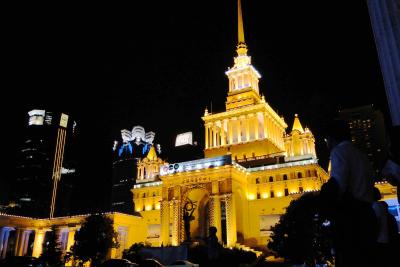
Themen
- Re-Value: „artistic evolution from traditional to modern to contemporary“
- Asiatische Gegenwartskunst sammeln
o China ist mittlerweile der 3. größte Kunstmarkt nach den USA und England
- Giorgio Morandi (Einfluss auf moderne und ggw. cn. Kunst)
o 1890-1964, ital. Maler und Grafiker, bekannt für seine Stillleben
o kontemplative und introspektive Stillleben, Landschaftsmalerei, Stiche, Radierungen
Exponate (Auswahl)
„Hype-Art“ (Pop-Art etc.) der Nuller-Jahre
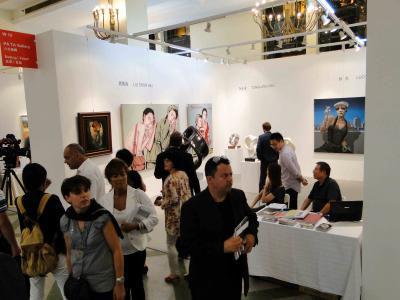 usw.
usw.
PA TA Gallery Beijing, Taipei
Neues entsteht – „The show must go on“
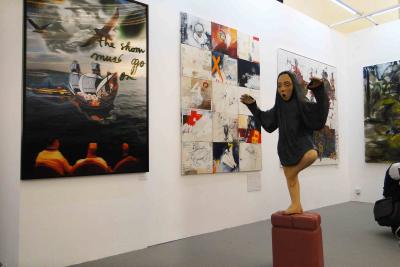
Art Statements
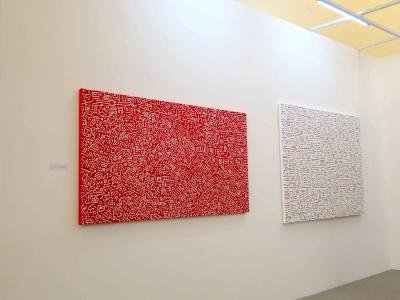
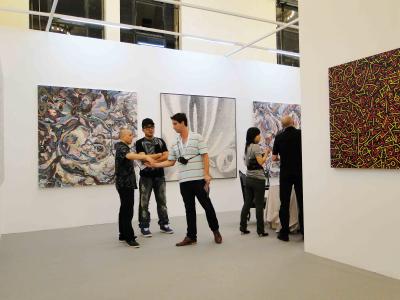
Art Labor Gallery Shanghai
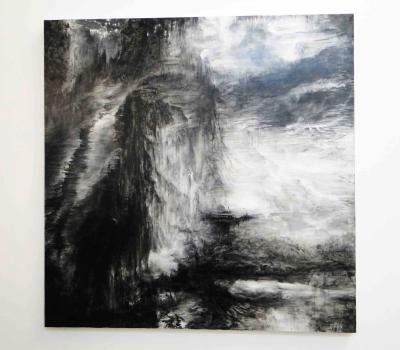
55 Shanghai
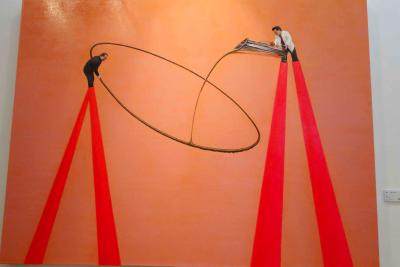
Zang Kunkun: Ohne Titel
Grafik
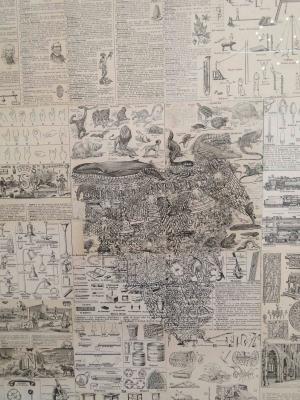
Kalfayan Galleries: Antonis Donef
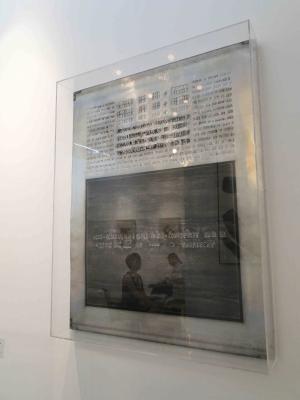
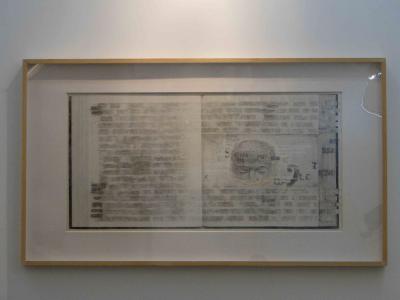
Hangzhou Renke Arts
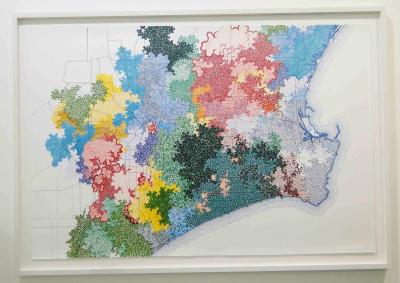
Hanmo Art Gallery
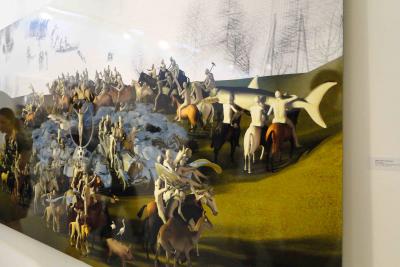
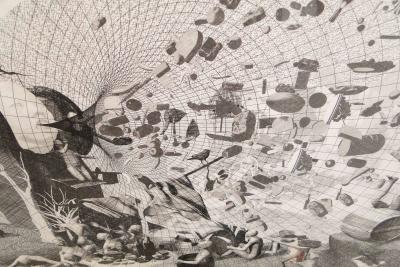
White Space Beijing: Miao Xiaochuns „Transport“ und „Greed
Anima
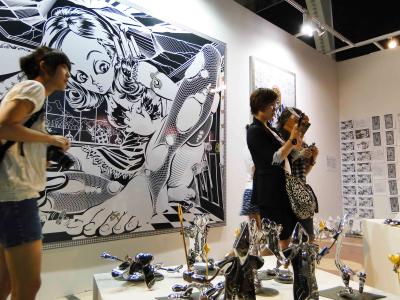
Taikang Space: Yang Mao-Lin
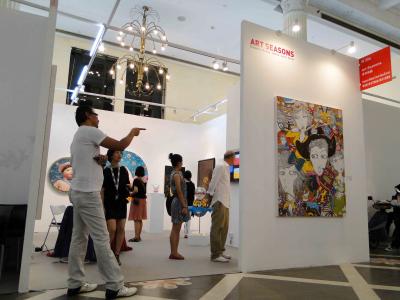
Art Seasons
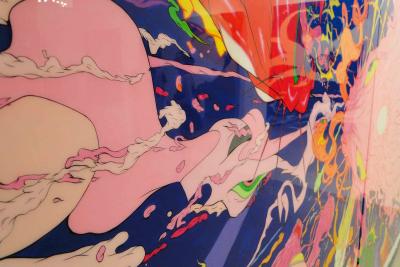
Art Statements: Yoshitaka Amanos „Deva Loka
Nightmare“
Traditionelle Malerei im neuen Gewand
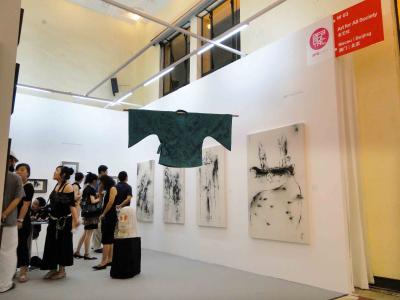
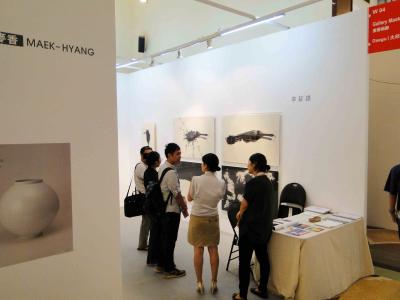
Art for All Society Macau, Beijing
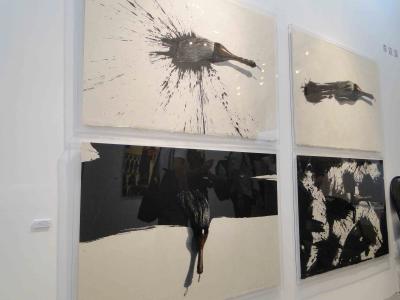
Gallery Maek-Hyang: Li Dingxiong
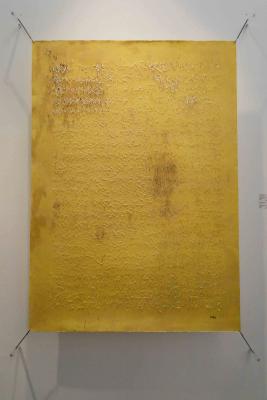
Gallery Artside: Oh Yeun Seoks „The Song of Lady“
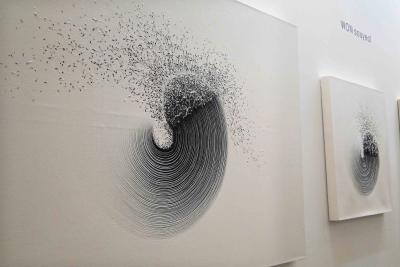
Christine Park Paris
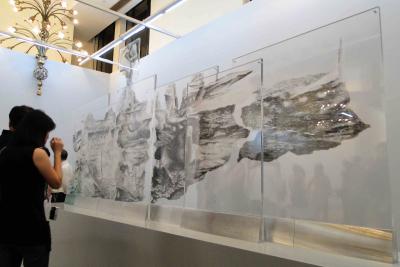
Cai Xiaosong
Fotografie (in Anlehnung an traditionelle Malerei)
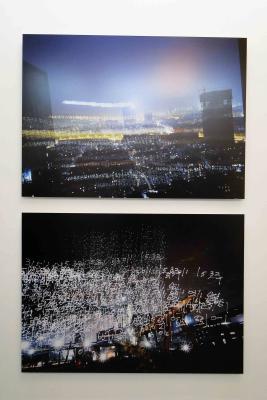
55 Shanghai
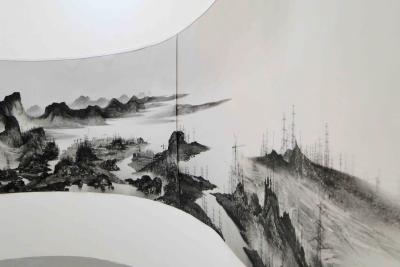
Paris-Beijing Galerie: Yang Yongliangs „Artificial Wonderland“
Dimensional Art
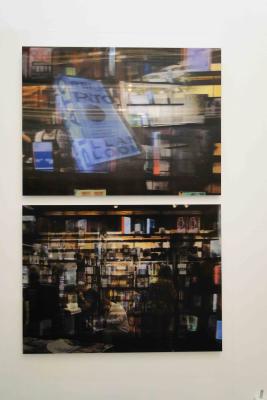
Arario Gallery Beijing
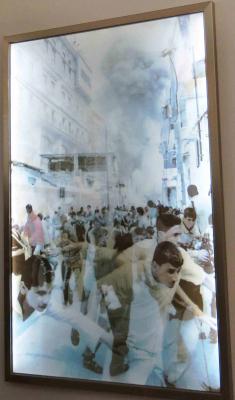
Pékin Fine Arts: Jin Shan
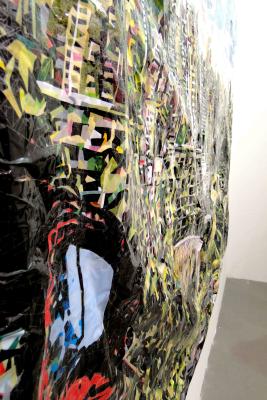
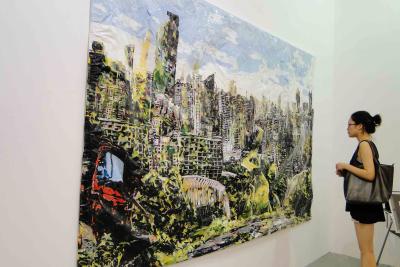
Art Issue Projects
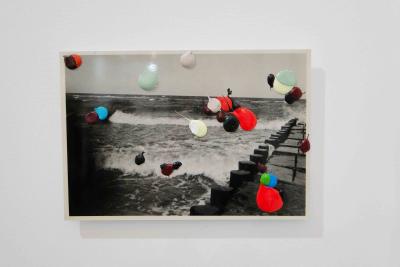
Art Issue Projects
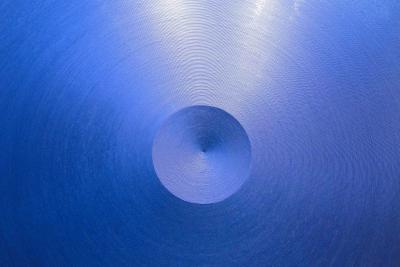
Arario Gallery Beijing
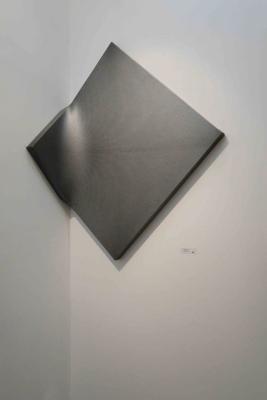
White Space Beijing
Skulpturesk
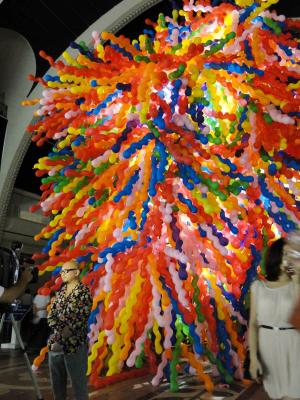
Gallery Hyundai
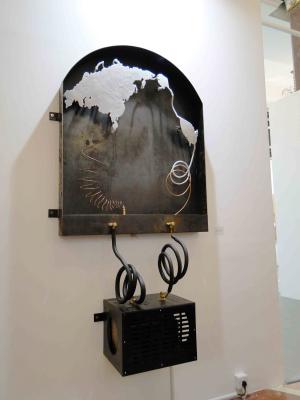
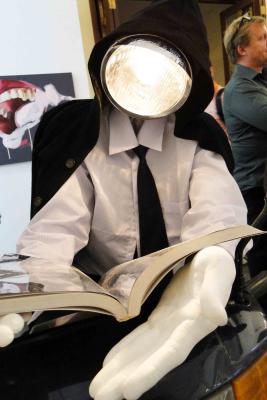
DNA Berlin
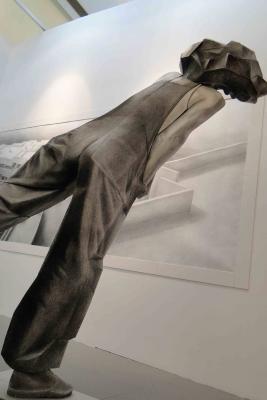
Hanmo Art Gallery
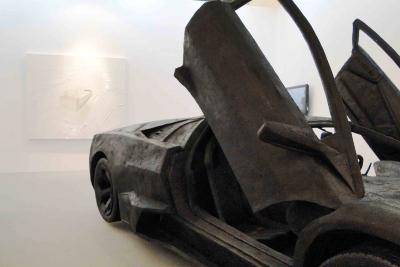
Art Issue Projects
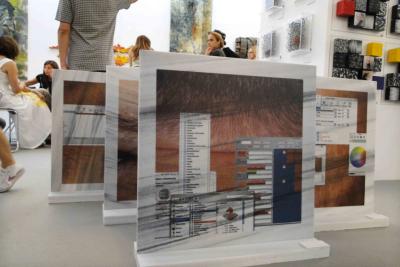
55 Shanghai
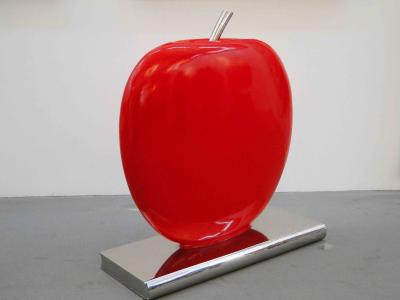
DNA Berlin
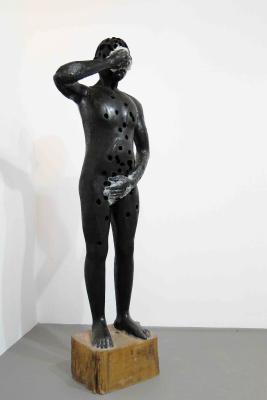
Arario Gallery Beijing: Tallur L. N.s „Man with Holes“
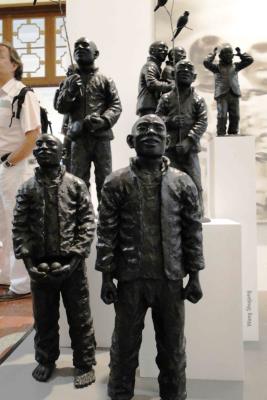
White Space Beijing: Wang Shugang
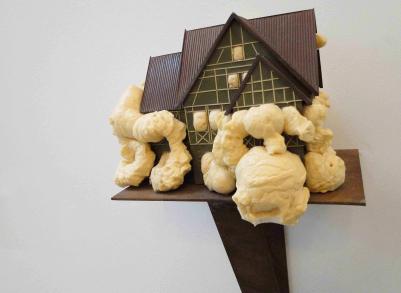
Liu Jiawei
Galerien (weitere Auswahl)
- Art Issue Projects, Beijing
o vorher Han Ji Yun Contemporary Space, jetzt Zus.schluss mit Art Issue Magazine
o neue engl.-cn. Kunstzeitschrift aus Beijing
o Fokus: Ggw.skunst China
- Boers-Li, Beijing
o Lin Chuang (Jingshan, 1978)
o gegründet 2005, Fokus: Installationen, Skulpturen, Malerei, Arbeiten auf Papier, Audioarbeiten, Fotografie, Video, Film, Performance, Digitalkunst
- Galleria Continua, Beijing
o Italien, gegründet 2004 im 798
- Long March Space, Beijing
o Zhu Yu (Chengdu, 1970): „controversial; focusing on moral and religious issues between humanity and divinity“
o gegründet 2002, Fokus: „dedicated to the fundamental questions of the relationship between curating, display and artistic creation, between practice and discourse, between objects and text, and between audience and artists“
- Alexander Ochs Galleries, Beijing, Berlin
o gegründet 1997 mit Asienbezug in Berlin, 2008 in Beijing
- White Space, Beijing
o gegründet 2004, Fokus: „emerging Chinese contemporary arts“
- PLATFORM China, Beijing
o gegründet 2005, Fokus: „develop and promote contemporary art in China and to build up a platform of cultural exchange and dialogue between Chinese and international artists“
- ShanghART, Shanghai, Beijing
o Sun Xun (Fuxin, 1980): produces a multitude of drawings that incorporate text within the image for his animation
o Zhao Bandi (BJ, 1966): Panda-Serien
o Initiiert 1996, Fokus: „one of China’s most influential contemporary art institutions“
- Tang Contemporary Art, Beijing
o Chen Wenbo (Chongqing, 1969): Mitglied der LM100 Creative Community
Freitag, 10. September 2010
ROCKBUND ART MUSEUM
- Adresse: 20 Huqiu Road, Huangpu District, Shanghai 200002, 黄浦区虎丘路20号 Tel: 021-3310 9985
- dies ist die zweite Ausstellung des gerade neu eröffneten Museums (inszwischen läuft die dritte Ausstellung: By Day, By Night, or Some (Special) Things a Museum Can Do). Zuvor gab es eine Ausstellung von Cai Guoqiang, einem sozialkritischen, sehr wichtigen und interessanten cn. Künstler. Beim letzten Mal wurde ein Teil der alten Bank mit als Ausstellungsfläche inkl. der alten Räumlichkeiten der Schließfächer verwendet, diese ist eine Kirche in der Nähe integriert
- ein wirklich spannendes neues Museum für Shanghai
- Ausstellung: Zeng Fanzhi „Unexpected Acts of Uncertain Consequence“ (Wuhan, 1964, lebt in BJ); einige Hintergrundinformationen zum Künstler:
o bekannt wurde Zeng mit der Porträtserie „Masks“, Landsleute Mitte der 1990er (Veränderung an der Oberfläche)
o Überpräsenz Mao Zedongs (Werk: „Tian’anmen“), weitere Werke von Marx, Engels, Stalin, Lenin
o Porträts, bäuerliche Landschaftsmalerei, politisch aufgeladene Motive, Alltag, überdimensionale Hände und stereotype Gesichter
o weitere Themen: Banalität und Trauma; Schalheit öffentlichen Raumes, die sich zermahlenden Massen; Seelenqual; Parodien zwischen Gedanken und Handeln; geisterhafte Abbilder als Echo von Mehrdeutigkeit und technischer Transformation
o Einfluss: dt. Expressionismus, später Song-Dynastie (kalligraphisch-romantisch); Studentenzeit in Wuhan mit Toilettenbenutzung des nahen Krankenhauses, Anblicke der Schlachter in seiner Straße
o viele cn. Künstle haben amerik. Popkunst aufgegriffen und sie in sozialen Realismus eingebunden als Kommentar der sich schnell verändernden cn. Gesellschaft – Zeng Fanzhi sticht hervor durch die introspektive Art seiner Arbeiten, mit der er häufig das persönliche Leben und seine Emotionen reflektiert, immer seine eigenen Gefühle porträtierend; ideologische Veränderungen haben ihn nichtsdestoweniger geprägt; er erfindet sich ständig neu; Idealismus und eine gewisse Traurigkeit, dass dieser nicht erfüllt werden kann
o Kompositionen zwischen Ironie und Optimismus, Fusion der Verehrung revolutionären Heroismus und ungewissen, sich rapide entwickelnden Zukunft; provokative Sensationslust, unterschwellige Gewalt, psychologische Spannung, übernatürliche Aura
o arbeitet gelegentlich simultan mit 2 Pinsel (gleichzeitiges Kreieren und Zerstören), mit einem, um das Subjekt zu beschreiben, während der andere Spuren auf der Leinwand des unterbewussten Malprozesses hinterlässt; Landschaftsmalerei so etwa Transformation in Abstraktion, die abgebildeten Personen fließen zus. in Erinnerung und Imagination
o eine Frage zur Sponsorenschaft Zengs kam auf: er stiftet jährlich 120 tsd. RMB an seine ehem. Kunstschule in Wuhan, 100 tsd. RMB an die Beida; nach dem Erdbeben im Mai 2008 in Sichuan hat er 370 tsd. RMB für ein Projekt zur Förderung behinderter Kinder zum Eintritt in Kunstschulen bereitgestellt
--> diese Art der Ausbildungsförderung ist nichts außergewöhnliches, besonders nicht für einen Künstler, der es v. a. auch im materiellen Sinne „geschafft“ hat
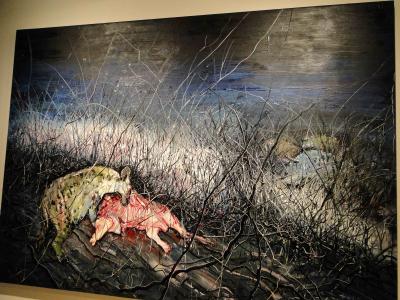
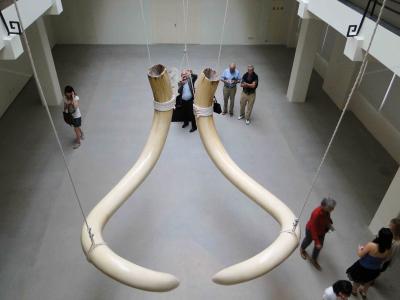
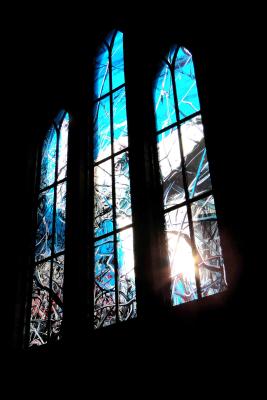
PEARL LAM CONTRASTS GALLERY
- Adresse: 黄浦区江西中路181号, 021-6323 1988
- gegründet 1996, vertreten in London, Paris, New York, Tokyo, Los Angeles und Shanghai, um bld. Kunst, Architektur und Design in Beziehung zu setzen
- Ausstellung: Li Tianbing „Childhood Fantasy“ (Guilin, 1974, lebt in Paris); einige Hintergrundinformationen zum Künstler:
o traditionelle cn. Malerei mit Elementen westlicher Ikonografie
o gesellschaftskritische Aspekte der Konsumgesellschaft, Veränderung kultureller Werte
o wichtige Serien: „LC Body“ und „Me and My Brother“; elegante und subtile Verbindung kultureller Einflüsse (Ost-West) mit dekonstruktiven Elementen unterschwelliger Gewalt
o „Childhood Fantasy“: Kindergesichter mit Symbolen bekannter Industriekonzerne oder bekannten Textzeilen (Internet, Zeitung); verwitterte, rissige Bildoberflächen; Absage an den Gebrauch von Farbe; Kommentar an ggw. Familienpolitik in China; atmosphärische Werke stilistischer Variationen; fernöstliche Philosophie der Grundidee stetiger Weiterentwicklung des Selbst
o Unvollkommenheit der Konservierung der Vergangenheit; Spannung zwischen fotografischer und dokumentarischer Belege, Erfassung von Erinnerung konstruierter (auch fiktiver), physikalischer Objekte
o zwei Herangehensweisen an die menschliche Existenz, deren Weg nicht kontrolliert werden kann, aber deren Verständnis ständig erweitert werden kann, mit dem Leben, das aus unterschiedlichen Facetten zusammengefügt ist, äußeren Einflüssen unterliegt und sich in Bewegung befindet; Teil dessen seiend kann akzeptiert werden oder wir können und mit der Anpassung abmühen – die vergänglich und illusorisch ist
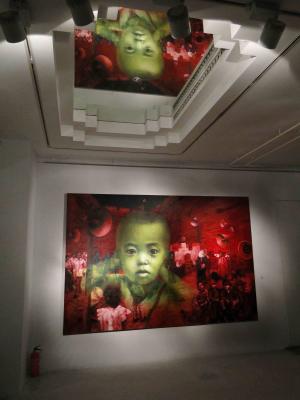
SHANGHAI GALLERY OF ART, THREE ON THE BUND
- Adresse: 3rd Floor, No.3, the Bund 中山东一路三号三楼, 021-6321 5757, 6323 3355
- gegründet 2004 mit dem Anspruch, wichtige cn. Ggwts.künstler zurück nach China zu holen, um die Geschichte Chinas zu bewahren
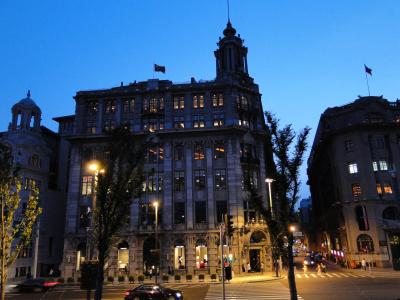
- aktuelle Ausstellung: Feng Mengbo „Journey to the West“ (Beijing, 1966); einige Hintergrundinformationen zum Künstler:
o Feng Mengbo ist ein Video- und Installationskünstler
o seine Arbeit „Q4U“, eine künstlerisch bearbeitete Version des Egoshooters Quake III, war 2002 auf der Documenta zu sehen
o 2004 wurde ihm der Kulturpreis Prix Ars Electronica für „Ah_Q – A Mirror of Death“ überreicht
o „Die Reise in den Westen“ ist einer der chin. literarischen Klassiker (insg. 4, dieser aus der Ming-Dynastie im 16. Jhd. von Wu Cheng’en)
--> Geschichte der Reise des Mönches Xuanzang zum westlichen Himmel, im heutigen Indien, von wo er Buddhas heilige Schriften nach China bringen soll – reale Begebenheit aus dem 7. Jhd.; begleitet wird er von Gefährten, von einem Wasserdämon, einem Menschen, der in ein Schwein verwandelt wurde und vom König der Affen Sun Wukong – dem eigentlichen Hauptcharakter der Geschichte
o Zus.fügung aus seinem Interesse an digitaler Kunst und Tradition, klassische spirituelle Werte sind überführt in die Cyberrealität Fengs
o idyllische Landschaften sind mit 3D-Programmen bearbeitet, dazu kommt ein interaktives Videospiel mit Gaming Hard- und Software
o Themen: Kommerz, Tradition
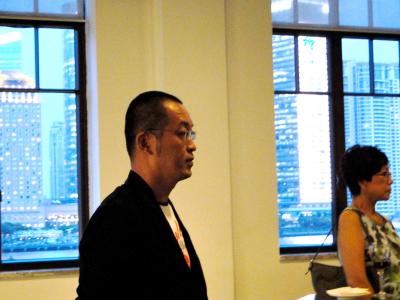
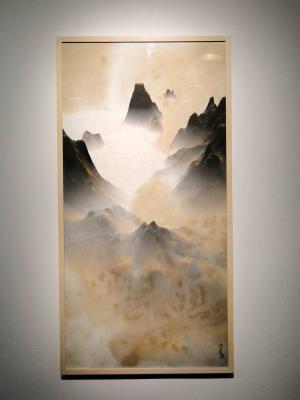
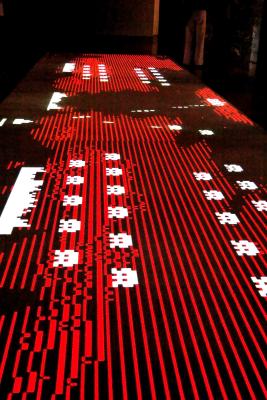
Three on the Bund mit Blick über den Bund
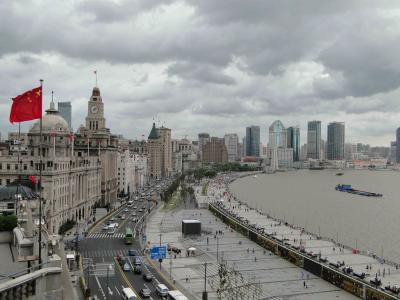
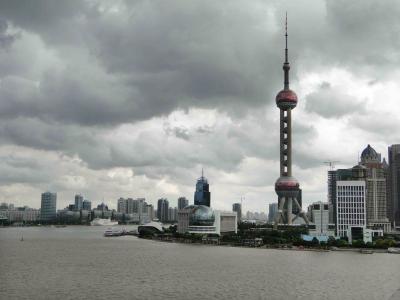
STUDIOBESUCH VON WU SHANZHUAN UND INGA SVALA THORSDOTTIR, PUDONG
- Wu Shanzhuan (Zhoushan, 1960, lebt in Hamburg und Shanghai), spricht Dt. und Engl.
- international anerkannter Konzeptkünstler, ein Freund von Bruno Bischofberger
- bekannt als einer der Vorreiter der cn. Konzeptbewegung in den 1980ern, war Wu der erste Künstler in China, der Textteile von Popanspielungen in seine Werke aufgenommen hat. Damals kristallisierte sich auch sein äußerst idiosynkratischer Ansatz der Malerei heraus, den er mit politischen Aussagen, religiösen Schriften und Werbeslogans kombiniert
- Wus Leinwände erscheinen als eine Kombination aus Graffiti und Expressionismus; zus.gefügt aus Wörtern, Symbolen, Diagrammen, die um den Platz auf seinen Werken zu wetteifern scheinen – virtuell auf der Wand und in piktografischer Abstraktion
- durch die Verwendung der Symbole entzieht er ihnen ihren urspr. Kontext und ihre kulturelle Bedeutung – wobei diese natürlich immer oberflächlich mitspielen –, er entleert sie durch den Massengebrauch an Farbe und Schrift, reinigt sie für den Neugebrauch und zur Kontemplation
- Wu geht den Prozess des Malens als Schreiben, exemplarisch etwa in seiner Serie „Today No Water“ von 2007. Als grafischer Roman angelegt, bildet jede Leinwand ein Kapitel einer sich aufbauenden Erzählung. Zugrunde liegt dem keine Storyline, sondern vielmehr eine visuelle Spannkraft zwischen fragmentarischen Phrasen und Bildern, die in einer Gesamtkomposition von Freestyle Assoziationen und Ideen, Referenzen und Symbolen zus.kommen

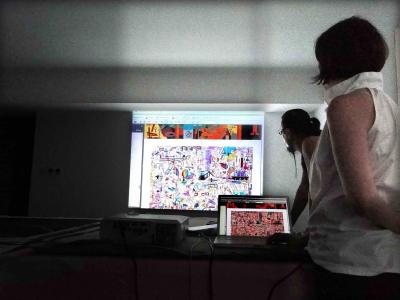
MOGANSHAN ART DISTRICT
- Adresse: 普陀区莫干山路50号
- das Moganshan, genannt M50 nach seiner Lage auf der Moganshan Road Nr. 50, ist das Künstlerviertel von Shanghai – ähnlich dem 798 in Beijing
- vor 10 Jahren zogen die ersten Künstler und Galerien in eine alte Textilfabrik in das Moganshan 50. Der Komplex war jahrelang vom Abriss bedroht, während sich in nächster Nachbarschaft Hochhäuser in die Höhe schraubten. In den letzten Jahren entwickelte sich dann in der 50 Moganshan Road eine Kunstoase, die schließlich immer kommerzieller wurde und dadurch ihr Bestehen sichern konnte
- das 10. Jubiläum des Viertels beginnt seine Eröffnungsfeier heute und geht bis in den Oktober hinein
- ShanghART, Shanghai, Beijing
o initiiert 1996 von Lorenz Helbling, gilt als eine der einflussreichsten Institutionen der Ggwts.kunst in China
o aktuelle Ausstellungen:
--> Sun Xun (Fuxin, 1980): New Media-Künstler; produziert eine Vielzahl von Werken, die Textpassagen in den Bildern seiner Anima aufnehmen; er beschäftigt sich mit Weltgeschichte und Politik, sowie mit lebenden Organismen
--> Zhao Bandi (BJ, 1966): bekannt für seine Panda-Serien als Parodie auf die offizielle cn. Propaganda, durch das Nationaltier spricht Zhao auch auf der ShContemporary unter den „Discoveries“, dort hat er seine Werke von den beiden Kindern vorstellen lassen
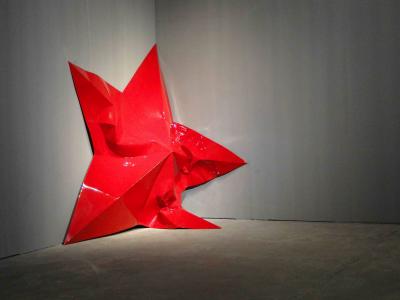
o. A.
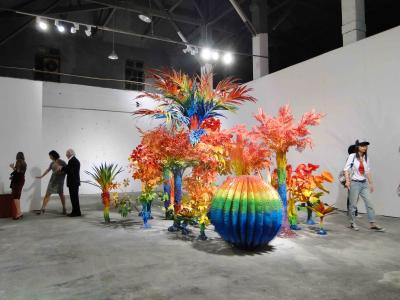
Madeln „Spread 201009103“ (2010)
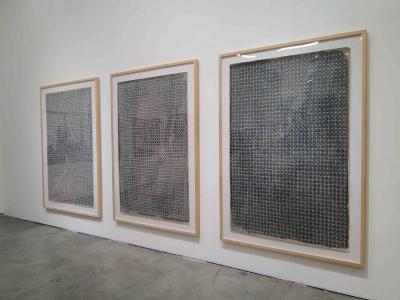
Ding Yi „Appearance of Crosses 2007-8-04/ 01/ 03“ (v.l.n.r., 2007)
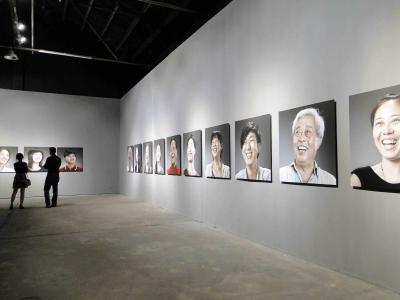
Yang Zhenzhong „No. 01 – No. 25“ (2010)
- Galerieempfehlungen zum 10. Jub. des M50
o Loh Gallery, Moganshan Bldg. 3/ 111: Galerieeröffnung 19 Uhr
o Madeln Space, Moganshan Bldg. 7/ 4. Stk., Eröffnung Li Ming, Lin Ke, Yang Junling: „Dedicated to Money Makers“, 18 Uhr
o Vanguard Gallery, Moganshan Bldg. 4A/ 204, Ausstellung Xu Di: „Vivid as Fruit“
Samstag, 11. September 2010
PRIVATSAMMLUNG VON QIAO ZHIBIN
- Sammler mit eigenen KTV-Clubs in Beijing und Shanghai
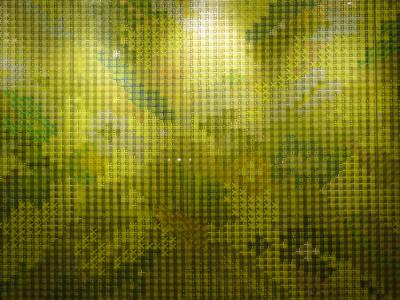
Ding Yi
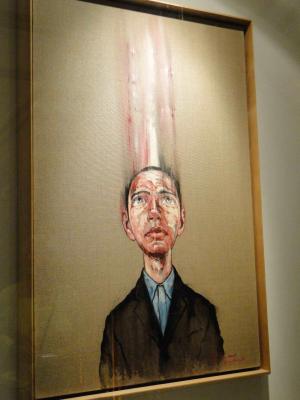
Zeng Fanzhi
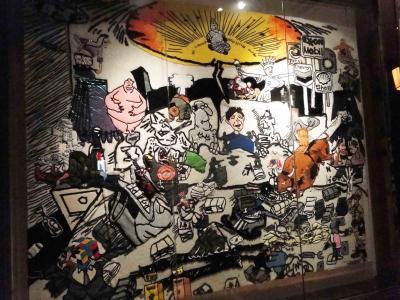
Aoyama Satoru
MINSHENG ART MUSEUM/ RED TOWN
- Adresse: Red Town, 570 Huaihai Xi Lu, Xuhui District 淮海西路570号,近凯旋路, Tel: 021-6280-4741, 6280-9231
o wie das Rockbund ist das Minsheng ein neues Museum mit der zweiten Ausstellung.
Es ist benannt nach seinem „Gründer“, der Minsheng Bank – das Museum ist das erste seiner Art in China, das von einer Bank gegründet wurde. Die erste Ausstellung hatte sehr große Ziele verfolgt, es handelte sich um eine Retrospektive der chin. Kunst der letzten 30 Jahre – leider wirkte es etwas willkürlich bzw. schien es, als wären die Werke ausgestellt, die gerade zur Verfügung standen oder von befreundeten Künstlern zur Verfügung gestellt wurden
- aktuelle Ausstellung: Korean Contemporary Art „Plastic Garden“
o „Plastic Garden“ ist eine Ausstellung von 17 koreanischen Künstlern mit 64 Werken
o Gemeinsamkeiten liegen eindeutig in der verbindenden asiatischen Tradition der Kalligraphie und des kontemplativen, buddhistischen Ansatzes; in der Vorstellung der Lehre des Nichts
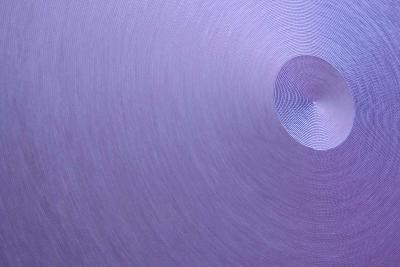
Noh Sang Kyoon
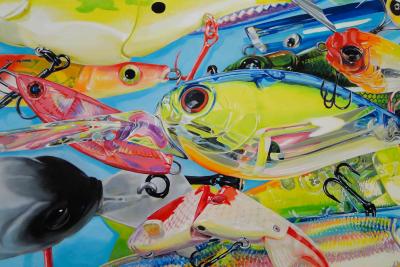
Yongbaek Lee
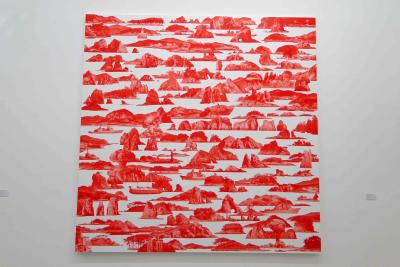
Lee Seahyun
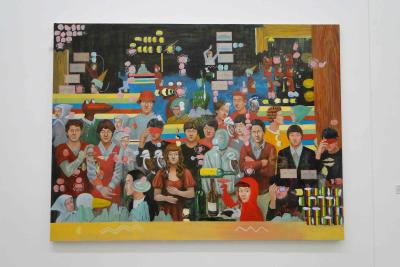
Chung Suejin
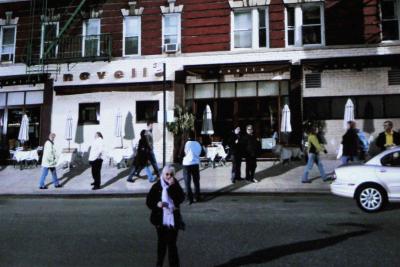
Jung Yeondoo
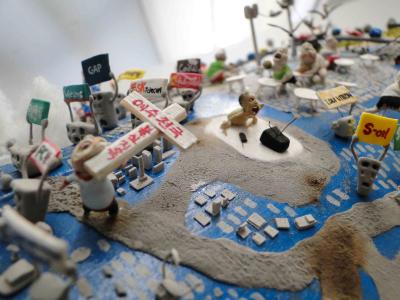
Ham Jin
RED TOWN: „SCULPTURE PARK“ UND „SCULPTURE SPACE“
- Regelmäßig wechselnde Skulpturen
- Red Town war urspr. eine Stahlfabrik und ist seit seiner „Neugründung“ 2005 zu einer der Zentren der Kreativindustrie Shanghais geworden (mit allem, was dazugehört, Designfirmen, Cafés, Galerien etc.)

WEITERE GALERIEN
- 140 sqm
o Galerie von Liu Yingmei, aktuell: Ai Weiwei und Zhang Peili
o Adresse: 1331 Fuxing Zhonglu, 26 Room, near Fenyang Lu 复兴中路1331号26室,汾阳路口, 021-6431 6216
- Zendai Himalayan Art Center
o aktuell: „Updating China for a Sustainable Future“ (dt.-cn. EXPO-Show)
o No. 28 Lane 199, Fangdian Lu 芳甸路199弄28号, 021-5033 9801
- MoCA Shanghai
o aktuell: Umbau für Eröffnung „Reflection of Minds“ am 12.9.
o Adresse: People's Park, 231 Nanjing West Road 人民公园南京西路231号,021-6327 9900
- Shanghai Duolun Museum of Modern Art
o aktuell: Saudi Arabien
o Adresse: No. 27 Duolun Road 多伦路27号, 021-6587 2530, 6587 5996
- Zhu Qizhan Art Museum
o aktuell: Poetry of Russian Soul
o Adresse: No. 580 Ouyang Road, 欧阳路580号, 021-5671 0742, 5671 0741
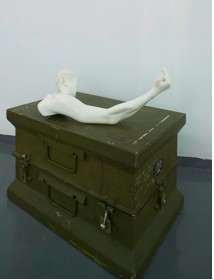
140sqm: Ai Weiweis Skulptur zur „Fuck Off“-Fotografieserie (2006)
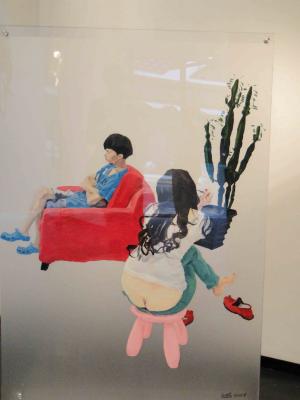
Fan Jiupeng (2010)
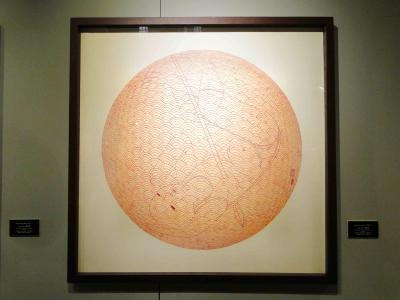
Art Labor Gallery: Ying Yefus „Sweet and Sour“ (2010)
Tags für diesen Beitrag 这本文章的标记: Reise 专程, Künstler 艺术家, Ausstellung 展览, Gegenwart 当代, Häufig gelesen 频看
Mittwoch, 8. September 2010
SHCONTEMPORARY
- Shanghai Exhibition Center 上海展览中心
- Adresse: 1000 Yan’an Zhong Lu 延安中路1000号
- www.shcontemporary.info/English/event/welcome
- Direktor: Colin Chinnery

Themen
- Re-Value: „artistic evolution from traditional to modern to contemporary“
- Asiatische Gegenwartskunst sammeln
o China ist mittlerweile der 3. größte Kunstmarkt nach den USA und England
- Giorgio Morandi (Einfluss auf moderne und ggw. cn. Kunst)
o 1890-1964, ital. Maler und Grafiker, bekannt für seine Stillleben
o kontemplative und introspektive Stillleben, Landschaftsmalerei, Stiche, Radierungen
Exponate (Auswahl)
„Hype-Art“ (Pop-Art etc.) der Nuller-Jahre
 usw.
usw.PA TA Gallery Beijing, Taipei
Neues entsteht – „The show must go on“

Art Statements


Art Labor Gallery Shanghai

55 Shanghai

Zang Kunkun: Ohne Titel
Grafik

Kalfayan Galleries: Antonis Donef


Hangzhou Renke Arts

Hanmo Art Gallery


White Space Beijing: Miao Xiaochuns „Transport“ und „Greed
Anima

Taikang Space: Yang Mao-Lin

Art Seasons

Art Statements: Yoshitaka Amanos „Deva Loka
Nightmare“
Traditionelle Malerei im neuen Gewand


Art for All Society Macau, Beijing

Gallery Maek-Hyang: Li Dingxiong

Gallery Artside: Oh Yeun Seoks „The Song of Lady“

Christine Park Paris

Cai Xiaosong
Fotografie (in Anlehnung an traditionelle Malerei)

55 Shanghai

Paris-Beijing Galerie: Yang Yongliangs „Artificial Wonderland“
Dimensional Art

Arario Gallery Beijing

Pékin Fine Arts: Jin Shan


Art Issue Projects

Art Issue Projects

Arario Gallery Beijing

White Space Beijing
Skulpturesk

Gallery Hyundai


DNA Berlin

Hanmo Art Gallery

Art Issue Projects

55 Shanghai

DNA Berlin

Arario Gallery Beijing: Tallur L. N.s „Man with Holes“

White Space Beijing: Wang Shugang

Liu Jiawei
Galerien (weitere Auswahl)
- Art Issue Projects, Beijing
o vorher Han Ji Yun Contemporary Space, jetzt Zus.schluss mit Art Issue Magazine
o neue engl.-cn. Kunstzeitschrift aus Beijing
o Fokus: Ggw.skunst China
- Boers-Li, Beijing
o Lin Chuang (Jingshan, 1978)
o gegründet 2005, Fokus: Installationen, Skulpturen, Malerei, Arbeiten auf Papier, Audioarbeiten, Fotografie, Video, Film, Performance, Digitalkunst
- Galleria Continua, Beijing
o Italien, gegründet 2004 im 798
- Long March Space, Beijing
o Zhu Yu (Chengdu, 1970): „controversial; focusing on moral and religious issues between humanity and divinity“
o gegründet 2002, Fokus: „dedicated to the fundamental questions of the relationship between curating, display and artistic creation, between practice and discourse, between objects and text, and between audience and artists“
- Alexander Ochs Galleries, Beijing, Berlin
o gegründet 1997 mit Asienbezug in Berlin, 2008 in Beijing
- White Space, Beijing
o gegründet 2004, Fokus: „emerging Chinese contemporary arts“
- PLATFORM China, Beijing
o gegründet 2005, Fokus: „develop and promote contemporary art in China and to build up a platform of cultural exchange and dialogue between Chinese and international artists“
- ShanghART, Shanghai, Beijing
o Sun Xun (Fuxin, 1980): produces a multitude of drawings that incorporate text within the image for his animation
o Zhao Bandi (BJ, 1966): Panda-Serien
o Initiiert 1996, Fokus: „one of China’s most influential contemporary art institutions“
- Tang Contemporary Art, Beijing
o Chen Wenbo (Chongqing, 1969): Mitglied der LM100 Creative Community
Freitag, 10. September 2010
ROCKBUND ART MUSEUM
- Adresse: 20 Huqiu Road, Huangpu District, Shanghai 200002, 黄浦区虎丘路20号 Tel: 021-3310 9985
- dies ist die zweite Ausstellung des gerade neu eröffneten Museums (inszwischen läuft die dritte Ausstellung: By Day, By Night, or Some (Special) Things a Museum Can Do). Zuvor gab es eine Ausstellung von Cai Guoqiang, einem sozialkritischen, sehr wichtigen und interessanten cn. Künstler. Beim letzten Mal wurde ein Teil der alten Bank mit als Ausstellungsfläche inkl. der alten Räumlichkeiten der Schließfächer verwendet, diese ist eine Kirche in der Nähe integriert
- ein wirklich spannendes neues Museum für Shanghai
- Ausstellung: Zeng Fanzhi „Unexpected Acts of Uncertain Consequence“ (Wuhan, 1964, lebt in BJ); einige Hintergrundinformationen zum Künstler:
o bekannt wurde Zeng mit der Porträtserie „Masks“, Landsleute Mitte der 1990er (Veränderung an der Oberfläche)
o Überpräsenz Mao Zedongs (Werk: „Tian’anmen“), weitere Werke von Marx, Engels, Stalin, Lenin
o Porträts, bäuerliche Landschaftsmalerei, politisch aufgeladene Motive, Alltag, überdimensionale Hände und stereotype Gesichter
o weitere Themen: Banalität und Trauma; Schalheit öffentlichen Raumes, die sich zermahlenden Massen; Seelenqual; Parodien zwischen Gedanken und Handeln; geisterhafte Abbilder als Echo von Mehrdeutigkeit und technischer Transformation
o Einfluss: dt. Expressionismus, später Song-Dynastie (kalligraphisch-romantisch); Studentenzeit in Wuhan mit Toilettenbenutzung des nahen Krankenhauses, Anblicke der Schlachter in seiner Straße
o viele cn. Künstle haben amerik. Popkunst aufgegriffen und sie in sozialen Realismus eingebunden als Kommentar der sich schnell verändernden cn. Gesellschaft – Zeng Fanzhi sticht hervor durch die introspektive Art seiner Arbeiten, mit der er häufig das persönliche Leben und seine Emotionen reflektiert, immer seine eigenen Gefühle porträtierend; ideologische Veränderungen haben ihn nichtsdestoweniger geprägt; er erfindet sich ständig neu; Idealismus und eine gewisse Traurigkeit, dass dieser nicht erfüllt werden kann
o Kompositionen zwischen Ironie und Optimismus, Fusion der Verehrung revolutionären Heroismus und ungewissen, sich rapide entwickelnden Zukunft; provokative Sensationslust, unterschwellige Gewalt, psychologische Spannung, übernatürliche Aura
o arbeitet gelegentlich simultan mit 2 Pinsel (gleichzeitiges Kreieren und Zerstören), mit einem, um das Subjekt zu beschreiben, während der andere Spuren auf der Leinwand des unterbewussten Malprozesses hinterlässt; Landschaftsmalerei so etwa Transformation in Abstraktion, die abgebildeten Personen fließen zus. in Erinnerung und Imagination
o eine Frage zur Sponsorenschaft Zengs kam auf: er stiftet jährlich 120 tsd. RMB an seine ehem. Kunstschule in Wuhan, 100 tsd. RMB an die Beida; nach dem Erdbeben im Mai 2008 in Sichuan hat er 370 tsd. RMB für ein Projekt zur Förderung behinderter Kinder zum Eintritt in Kunstschulen bereitgestellt
--> diese Art der Ausbildungsförderung ist nichts außergewöhnliches, besonders nicht für einen Künstler, der es v. a. auch im materiellen Sinne „geschafft“ hat



PEARL LAM CONTRASTS GALLERY
- Adresse: 黄浦区江西中路181号, 021-6323 1988
- gegründet 1996, vertreten in London, Paris, New York, Tokyo, Los Angeles und Shanghai, um bld. Kunst, Architektur und Design in Beziehung zu setzen
- Ausstellung: Li Tianbing „Childhood Fantasy“ (Guilin, 1974, lebt in Paris); einige Hintergrundinformationen zum Künstler:
o traditionelle cn. Malerei mit Elementen westlicher Ikonografie
o gesellschaftskritische Aspekte der Konsumgesellschaft, Veränderung kultureller Werte
o wichtige Serien: „LC Body“ und „Me and My Brother“; elegante und subtile Verbindung kultureller Einflüsse (Ost-West) mit dekonstruktiven Elementen unterschwelliger Gewalt
o „Childhood Fantasy“: Kindergesichter mit Symbolen bekannter Industriekonzerne oder bekannten Textzeilen (Internet, Zeitung); verwitterte, rissige Bildoberflächen; Absage an den Gebrauch von Farbe; Kommentar an ggw. Familienpolitik in China; atmosphärische Werke stilistischer Variationen; fernöstliche Philosophie der Grundidee stetiger Weiterentwicklung des Selbst
o Unvollkommenheit der Konservierung der Vergangenheit; Spannung zwischen fotografischer und dokumentarischer Belege, Erfassung von Erinnerung konstruierter (auch fiktiver), physikalischer Objekte
o zwei Herangehensweisen an die menschliche Existenz, deren Weg nicht kontrolliert werden kann, aber deren Verständnis ständig erweitert werden kann, mit dem Leben, das aus unterschiedlichen Facetten zusammengefügt ist, äußeren Einflüssen unterliegt und sich in Bewegung befindet; Teil dessen seiend kann akzeptiert werden oder wir können und mit der Anpassung abmühen – die vergänglich und illusorisch ist

SHANGHAI GALLERY OF ART, THREE ON THE BUND
- Adresse: 3rd Floor, No.3, the Bund 中山东一路三号三楼, 021-6321 5757, 6323 3355
- gegründet 2004 mit dem Anspruch, wichtige cn. Ggwts.künstler zurück nach China zu holen, um die Geschichte Chinas zu bewahren

- aktuelle Ausstellung: Feng Mengbo „Journey to the West“ (Beijing, 1966); einige Hintergrundinformationen zum Künstler:
o Feng Mengbo ist ein Video- und Installationskünstler
o seine Arbeit „Q4U“, eine künstlerisch bearbeitete Version des Egoshooters Quake III, war 2002 auf der Documenta zu sehen
o 2004 wurde ihm der Kulturpreis Prix Ars Electronica für „Ah_Q – A Mirror of Death“ überreicht
o „Die Reise in den Westen“ ist einer der chin. literarischen Klassiker (insg. 4, dieser aus der Ming-Dynastie im 16. Jhd. von Wu Cheng’en)
--> Geschichte der Reise des Mönches Xuanzang zum westlichen Himmel, im heutigen Indien, von wo er Buddhas heilige Schriften nach China bringen soll – reale Begebenheit aus dem 7. Jhd.; begleitet wird er von Gefährten, von einem Wasserdämon, einem Menschen, der in ein Schwein verwandelt wurde und vom König der Affen Sun Wukong – dem eigentlichen Hauptcharakter der Geschichte
o Zus.fügung aus seinem Interesse an digitaler Kunst und Tradition, klassische spirituelle Werte sind überführt in die Cyberrealität Fengs
o idyllische Landschaften sind mit 3D-Programmen bearbeitet, dazu kommt ein interaktives Videospiel mit Gaming Hard- und Software
o Themen: Kommerz, Tradition



Three on the Bund mit Blick über den Bund


STUDIOBESUCH VON WU SHANZHUAN UND INGA SVALA THORSDOTTIR, PUDONG
- Wu Shanzhuan (Zhoushan, 1960, lebt in Hamburg und Shanghai), spricht Dt. und Engl.
- international anerkannter Konzeptkünstler, ein Freund von Bruno Bischofberger
- bekannt als einer der Vorreiter der cn. Konzeptbewegung in den 1980ern, war Wu der erste Künstler in China, der Textteile von Popanspielungen in seine Werke aufgenommen hat. Damals kristallisierte sich auch sein äußerst idiosynkratischer Ansatz der Malerei heraus, den er mit politischen Aussagen, religiösen Schriften und Werbeslogans kombiniert
- Wus Leinwände erscheinen als eine Kombination aus Graffiti und Expressionismus; zus.gefügt aus Wörtern, Symbolen, Diagrammen, die um den Platz auf seinen Werken zu wetteifern scheinen – virtuell auf der Wand und in piktografischer Abstraktion
- durch die Verwendung der Symbole entzieht er ihnen ihren urspr. Kontext und ihre kulturelle Bedeutung – wobei diese natürlich immer oberflächlich mitspielen –, er entleert sie durch den Massengebrauch an Farbe und Schrift, reinigt sie für den Neugebrauch und zur Kontemplation
- Wu geht den Prozess des Malens als Schreiben, exemplarisch etwa in seiner Serie „Today No Water“ von 2007. Als grafischer Roman angelegt, bildet jede Leinwand ein Kapitel einer sich aufbauenden Erzählung. Zugrunde liegt dem keine Storyline, sondern vielmehr eine visuelle Spannkraft zwischen fragmentarischen Phrasen und Bildern, die in einer Gesamtkomposition von Freestyle Assoziationen und Ideen, Referenzen und Symbolen zus.kommen


MOGANSHAN ART DISTRICT
- Adresse: 普陀区莫干山路50号
- das Moganshan, genannt M50 nach seiner Lage auf der Moganshan Road Nr. 50, ist das Künstlerviertel von Shanghai – ähnlich dem 798 in Beijing
- vor 10 Jahren zogen die ersten Künstler und Galerien in eine alte Textilfabrik in das Moganshan 50. Der Komplex war jahrelang vom Abriss bedroht, während sich in nächster Nachbarschaft Hochhäuser in die Höhe schraubten. In den letzten Jahren entwickelte sich dann in der 50 Moganshan Road eine Kunstoase, die schließlich immer kommerzieller wurde und dadurch ihr Bestehen sichern konnte
- das 10. Jubiläum des Viertels beginnt seine Eröffnungsfeier heute und geht bis in den Oktober hinein
- ShanghART, Shanghai, Beijing
o initiiert 1996 von Lorenz Helbling, gilt als eine der einflussreichsten Institutionen der Ggwts.kunst in China
o aktuelle Ausstellungen:
--> Sun Xun (Fuxin, 1980): New Media-Künstler; produziert eine Vielzahl von Werken, die Textpassagen in den Bildern seiner Anima aufnehmen; er beschäftigt sich mit Weltgeschichte und Politik, sowie mit lebenden Organismen
--> Zhao Bandi (BJ, 1966): bekannt für seine Panda-Serien als Parodie auf die offizielle cn. Propaganda, durch das Nationaltier spricht Zhao auch auf der ShContemporary unter den „Discoveries“, dort hat er seine Werke von den beiden Kindern vorstellen lassen

o. A.

Madeln „Spread 201009103“ (2010)

Ding Yi „Appearance of Crosses 2007-8-04/ 01/ 03“ (v.l.n.r., 2007)

Yang Zhenzhong „No. 01 – No. 25“ (2010)
- Galerieempfehlungen zum 10. Jub. des M50
o Loh Gallery, Moganshan Bldg. 3/ 111: Galerieeröffnung 19 Uhr
o Madeln Space, Moganshan Bldg. 7/ 4. Stk., Eröffnung Li Ming, Lin Ke, Yang Junling: „Dedicated to Money Makers“, 18 Uhr
o Vanguard Gallery, Moganshan Bldg. 4A/ 204, Ausstellung Xu Di: „Vivid as Fruit“
Samstag, 11. September 2010
PRIVATSAMMLUNG VON QIAO ZHIBIN
- Sammler mit eigenen KTV-Clubs in Beijing und Shanghai

Ding Yi

Zeng Fanzhi

Aoyama Satoru
MINSHENG ART MUSEUM/ RED TOWN
- Adresse: Red Town, 570 Huaihai Xi Lu, Xuhui District 淮海西路570号,近凯旋路, Tel: 021-6280-4741, 6280-9231
o wie das Rockbund ist das Minsheng ein neues Museum mit der zweiten Ausstellung.
Es ist benannt nach seinem „Gründer“, der Minsheng Bank – das Museum ist das erste seiner Art in China, das von einer Bank gegründet wurde. Die erste Ausstellung hatte sehr große Ziele verfolgt, es handelte sich um eine Retrospektive der chin. Kunst der letzten 30 Jahre – leider wirkte es etwas willkürlich bzw. schien es, als wären die Werke ausgestellt, die gerade zur Verfügung standen oder von befreundeten Künstlern zur Verfügung gestellt wurden
- aktuelle Ausstellung: Korean Contemporary Art „Plastic Garden“
o „Plastic Garden“ ist eine Ausstellung von 17 koreanischen Künstlern mit 64 Werken
o Gemeinsamkeiten liegen eindeutig in der verbindenden asiatischen Tradition der Kalligraphie und des kontemplativen, buddhistischen Ansatzes; in der Vorstellung der Lehre des Nichts

Noh Sang Kyoon

Yongbaek Lee

Lee Seahyun

Chung Suejin

Jung Yeondoo

Ham Jin
RED TOWN: „SCULPTURE PARK“ UND „SCULPTURE SPACE“
- Regelmäßig wechselnde Skulpturen
- Red Town war urspr. eine Stahlfabrik und ist seit seiner „Neugründung“ 2005 zu einer der Zentren der Kreativindustrie Shanghais geworden (mit allem, was dazugehört, Designfirmen, Cafés, Galerien etc.)

WEITERE GALERIEN
- 140 sqm
o Galerie von Liu Yingmei, aktuell: Ai Weiwei und Zhang Peili
o Adresse: 1331 Fuxing Zhonglu, 26 Room, near Fenyang Lu 复兴中路1331号26室,汾阳路口, 021-6431 6216
- Zendai Himalayan Art Center
o aktuell: „Updating China for a Sustainable Future“ (dt.-cn. EXPO-Show)
o No. 28 Lane 199, Fangdian Lu 芳甸路199弄28号, 021-5033 9801
- MoCA Shanghai
o aktuell: Umbau für Eröffnung „Reflection of Minds“ am 12.9.
o Adresse: People's Park, 231 Nanjing West Road 人民公园南京西路231号,021-6327 9900
- Shanghai Duolun Museum of Modern Art
o aktuell: Saudi Arabien
o Adresse: No. 27 Duolun Road 多伦路27号, 021-6587 2530, 6587 5996
- Zhu Qizhan Art Museum
o aktuell: Poetry of Russian Soul
o Adresse: No. 580 Ouyang Road, 欧阳路580号, 021-5671 0742, 5671 0741

140sqm: Ai Weiweis Skulptur zur „Fuck Off“-Fotografieserie (2006)

Fan Jiupeng (2010)

Art Labor Gallery: Ying Yefus „Sweet and Sour“ (2010)
Tags für diesen Beitrag 这本文章的标记: Reise 专程, Künstler 艺术家, Ausstellung 展览, Gegenwart 当代, Häufig gelesen 频看
... link (0 Kommentare) ... comment
Mittwoch, 17. November 2010
Auf Kunstreise in Beijing
youjia, 13:22h
Hier ein paar weitere Eindrücke der Kunstreise durch Shanghai und Beijing vom 8.-14. September 2010 – und nun Beijing, kürzer gehalten, vermutlich weil von mir allgemein abgegraster:
Sonntag, 12. September
Zunächst ein paar Sehenswürdigkeiten auf der Nord-Süd-Achse:
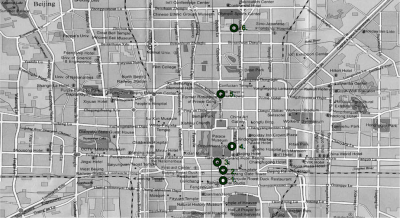
(Quelle: chinaodyseeytours.com, 21.2.09)
1. Qianmen („Das vordere Tor“)
2. Platz des himmlischen Friedens, Tian’anmen
--> Vom Qianmen ausgehend, das „Mao Mausoleum“, links der „Großen Halle des Volkes“, rechts dem „Museum der chin. Revolution und Geschichte“ über den „Platz des Himmlischen Friedens“ am „Denkmal für die Volkshelden“ (38 m hohe Stele in der Mitte des Platzes) Richtung „Verbotene Stadt“ – Symmetrie und Planung, rot/ gelb, Nord-Süd-Achse, Regierungsviertel
„Zhongnanhai“
3. Nationaltheater/ „Entenei“ (Paul Andreu)
4. Vorbei an der Verbotenen Stadt, Nan Chizi
5. Am Meishuguan (NAMOC) vorbei hoch, vorbei am See Houhai zum Trommelturm
6. „Olympic Green“ mit „Vogelnest“ (Herzog & deMeuron) und „Watercube“ (PTW)
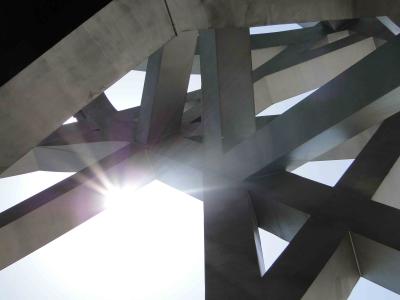
Anschließende Fahrt ins 798:
PACE GALLERY
- aktuelle Ausstellung: Performance Art der 1990er-Jahre in China
- die Performance als Medium „to push […] art to the edge of reality […] to seem surreal“
o Featuring: Duan Jianyu, Hai Bo, He An, He Yunchang, Hu Xiangqian, Liu Yilin, Liu Wei, Liu Xiaodong, Ma Liuming, Ma Qiusha, Qin Ga, Qiu Zhijie, Song Dong, Sun Yuan & Peng Yu, Wang Jin, Wang Qingsong, Wu Daxin, Wu Xiaojun, Xiao Yu, Xu Zhen, Yang Fudong, Yang Maoyuan, Yang Zhichao, Yuan Shun, Zhan Wang, Zhang Dali, Zhang Huan, Zhao Bandi, Zhuo Tiehai, Zhu Fadong, Zhu Yu
TANG CONTEMPORARY
- aktuelle Ausstellung: Zheng Guogu, Chen Zaiyan, Sun Qinglin „Garden of Pine – Also Fierce Than Tiger II“
o die drei Anfang der 1970er-Jahre in Yangjiang/ Guangdong geborenen Künstler sind bekannt unter dem Namen „Yangjiang-Gruppe“, gegründet 2002 (bis 2005 Yangjiang Calligraphy Group)
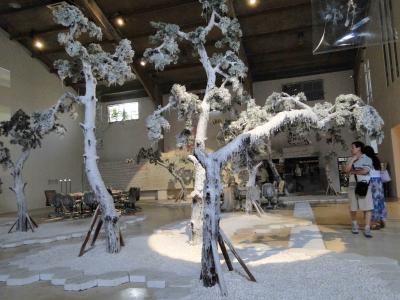
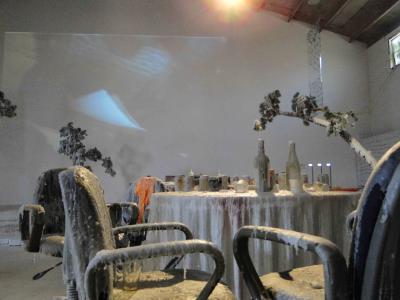
LONG MARCH GALLERY
- aktuelle Gruppenausstellung: „Long March Project – Ho Chi Minh Trail“
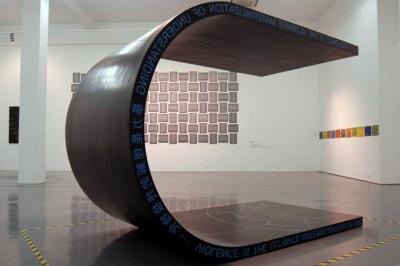
(Quelle: Long March Project, Stand: 18.9.10)
ULLENS CENTER FOR CONTEMPORARY ART UCCA
- aktuelle Ausstellung (u. a.): Zhang Huan „Hope Tunnel“
o im Zuge des schweren Erdbebens im Mai 2008 in Sichuan sind dies die Überbleibsel des mit kerosinhaltigem Material beladenen Transportzuges, der im Tunnel vom Beben überrascht wurde, und die Zhang Huan vor der Stahlschmelze als Gedenken retten konnte
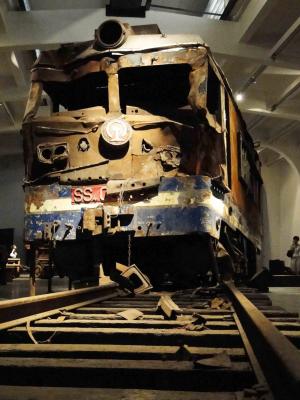
Zhang Huans „Hope Tunnel“
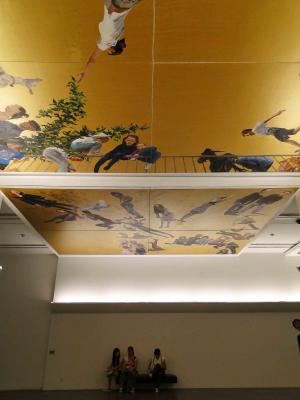
Yu Hongs „Golden Sky“
Dienstag, 14. September
URS MEILE GALLERY
- aktuelle Ausstellung: Shan Fan „Homeland: Painting the Moment – Peinting Slowness“
o „China, a society which turned the written word itself into the most elevated of art forms and used that calligraphy aesthetic to create a complex whole connected by a sophisticated political and symbolic abstract spirituality.“
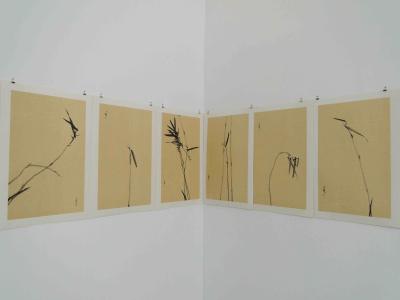
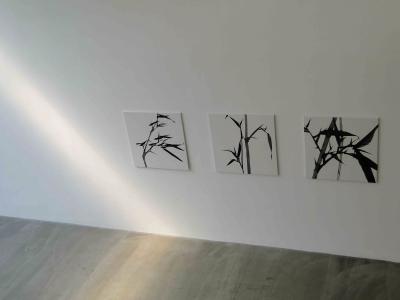
Shan Fan, Komposition und Zoom
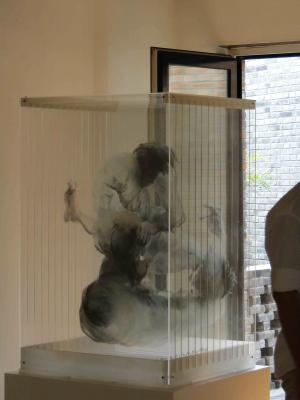
Xiao Wan
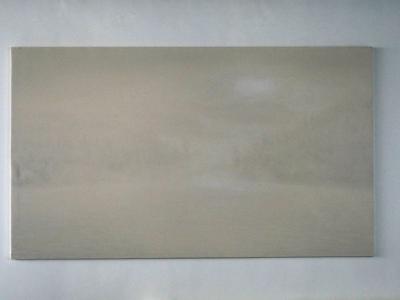
Qiu Shihua
BESICHTIGUNG DER KÜNSTLERSTUDIOS VON
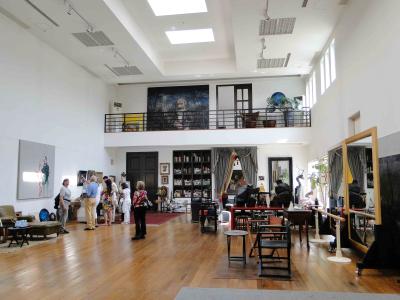
Zeng Fanzhi
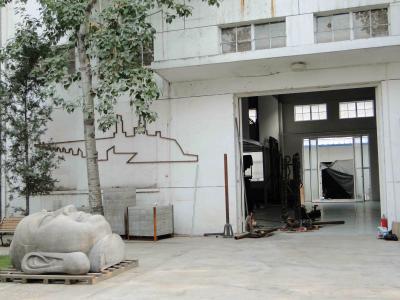
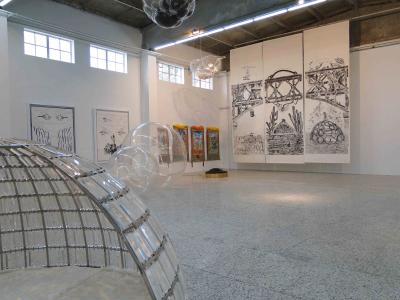
Qiu Zhijie
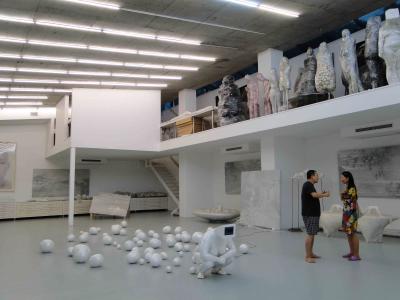
Lin Tianmiao und Wang Gongxin
BESICHTIGUNG WEITERER GALERIEN IM CAOCHANGDI
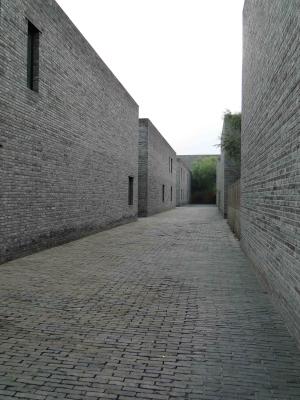
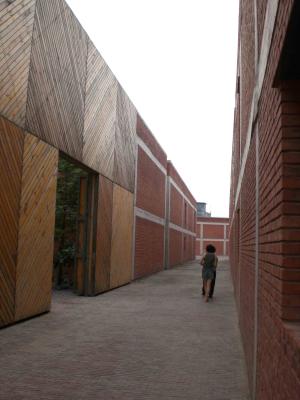
Caochangdi: Das Original von Ai Weiwei (oben) und der „Nachbau“ in unmittelbarer Nähe
- Three Shadows Gallery
o Fotografiezentrum von Rong Rong und inri
- Platform China
- White Space Beijing
- Alexander Ochs Galleries
- etc.
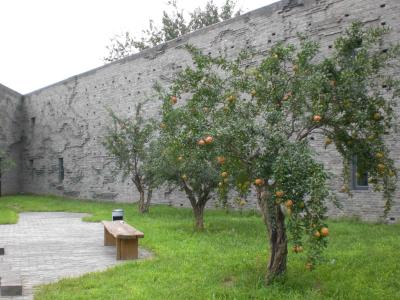
Three Shadows Gallery (das Foto ist allerdings von 2009, die Granatapfelbäume mussten dieses Jahr bis auf den Stamm heruntergeschnitten werden, was ziemlich traurig aussieht – aber sie treiben wieder)
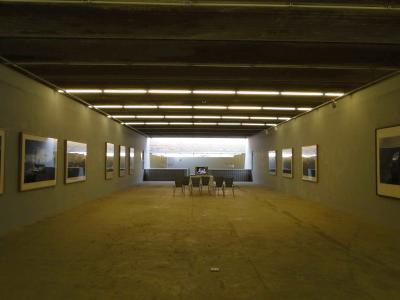
Aktuelle Ausstellung im Three Shadow: Rong Rong und inri
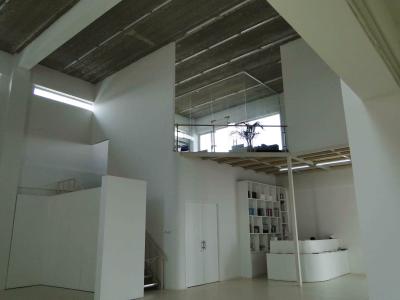
Platform China
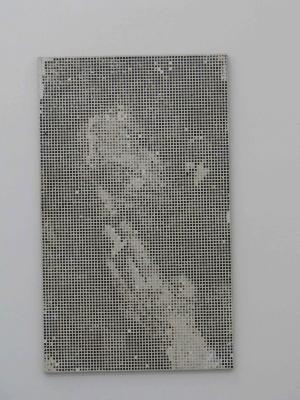
Aktuelle Ausstellung im Platform: Xie Xiaobings „Just only for an ideal“ (2010)

Pei & Lei Gallery: Wang Zhijies „Little Girl“ (2009)
Tags für diesen Beitrag 这本文章的标记: Reise 专程, Künstler 艺术家, Ausstellung 展览, Gegenwart 当代, Häufig gelesen 频看
Sonntag, 12. September
Zunächst ein paar Sehenswürdigkeiten auf der Nord-Süd-Achse:

(Quelle: chinaodyseeytours.com, 21.2.09)
1. Qianmen („Das vordere Tor“)
2. Platz des himmlischen Friedens, Tian’anmen
--> Vom Qianmen ausgehend, das „Mao Mausoleum“, links der „Großen Halle des Volkes“, rechts dem „Museum der chin. Revolution und Geschichte“ über den „Platz des Himmlischen Friedens“ am „Denkmal für die Volkshelden“ (38 m hohe Stele in der Mitte des Platzes) Richtung „Verbotene Stadt“ – Symmetrie und Planung, rot/ gelb, Nord-Süd-Achse, Regierungsviertel
„Zhongnanhai“
3. Nationaltheater/ „Entenei“ (Paul Andreu)
4. Vorbei an der Verbotenen Stadt, Nan Chizi
5. Am Meishuguan (NAMOC) vorbei hoch, vorbei am See Houhai zum Trommelturm
6. „Olympic Green“ mit „Vogelnest“ (Herzog & deMeuron) und „Watercube“ (PTW)

Anschließende Fahrt ins 798:
PACE GALLERY
- aktuelle Ausstellung: Performance Art der 1990er-Jahre in China
- die Performance als Medium „to push […] art to the edge of reality […] to seem surreal“
o Featuring: Duan Jianyu, Hai Bo, He An, He Yunchang, Hu Xiangqian, Liu Yilin, Liu Wei, Liu Xiaodong, Ma Liuming, Ma Qiusha, Qin Ga, Qiu Zhijie, Song Dong, Sun Yuan & Peng Yu, Wang Jin, Wang Qingsong, Wu Daxin, Wu Xiaojun, Xiao Yu, Xu Zhen, Yang Fudong, Yang Maoyuan, Yang Zhichao, Yuan Shun, Zhan Wang, Zhang Dali, Zhang Huan, Zhao Bandi, Zhuo Tiehai, Zhu Fadong, Zhu Yu
TANG CONTEMPORARY
- aktuelle Ausstellung: Zheng Guogu, Chen Zaiyan, Sun Qinglin „Garden of Pine – Also Fierce Than Tiger II“
o die drei Anfang der 1970er-Jahre in Yangjiang/ Guangdong geborenen Künstler sind bekannt unter dem Namen „Yangjiang-Gruppe“, gegründet 2002 (bis 2005 Yangjiang Calligraphy Group)


LONG MARCH GALLERY
- aktuelle Gruppenausstellung: „Long March Project – Ho Chi Minh Trail“

(Quelle: Long March Project, Stand: 18.9.10)
ULLENS CENTER FOR CONTEMPORARY ART UCCA
- aktuelle Ausstellung (u. a.): Zhang Huan „Hope Tunnel“
o im Zuge des schweren Erdbebens im Mai 2008 in Sichuan sind dies die Überbleibsel des mit kerosinhaltigem Material beladenen Transportzuges, der im Tunnel vom Beben überrascht wurde, und die Zhang Huan vor der Stahlschmelze als Gedenken retten konnte

Zhang Huans „Hope Tunnel“

Yu Hongs „Golden Sky“
Dienstag, 14. September
URS MEILE GALLERY
- aktuelle Ausstellung: Shan Fan „Homeland: Painting the Moment – Peinting Slowness“
o „China, a society which turned the written word itself into the most elevated of art forms and used that calligraphy aesthetic to create a complex whole connected by a sophisticated political and symbolic abstract spirituality.“


Shan Fan, Komposition und Zoom

Xiao Wan

Qiu Shihua
BESICHTIGUNG DER KÜNSTLERSTUDIOS VON

Zeng Fanzhi


Qiu Zhijie

Lin Tianmiao und Wang Gongxin
BESICHTIGUNG WEITERER GALERIEN IM CAOCHANGDI


Caochangdi: Das Original von Ai Weiwei (oben) und der „Nachbau“ in unmittelbarer Nähe
- Three Shadows Gallery
o Fotografiezentrum von Rong Rong und inri
- Platform China
- White Space Beijing
- Alexander Ochs Galleries
- etc.

Three Shadows Gallery (das Foto ist allerdings von 2009, die Granatapfelbäume mussten dieses Jahr bis auf den Stamm heruntergeschnitten werden, was ziemlich traurig aussieht – aber sie treiben wieder)

Aktuelle Ausstellung im Three Shadow: Rong Rong und inri

Platform China

Aktuelle Ausstellung im Platform: Xie Xiaobings „Just only for an ideal“ (2010)

Pei & Lei Gallery: Wang Zhijies „Little Girl“ (2009)
Tags für diesen Beitrag 这本文章的标记: Reise 专程, Künstler 艺术家, Ausstellung 展览, Gegenwart 当代, Häufig gelesen 频看
... link (0 Kommentare) ... comment
Dienstag, 16. November 2010
LA PUBLICA –– The Booklaunch!
youjia, 02:19h
If you happen to be in Beijing: Please feel welcome to come to the Bookworm on Thursday, November 25th, 2010 at 7:30 pm to celebrate with us the booklaunch with panel discussion of
Katharina Schneider-Roos and Stefanie Thiedig (eds.): Culturescapes China: Chinas Kuturszene ab 2000 (China's Cultural Scene Since 2000). Basel: Christoph Merian 2010.
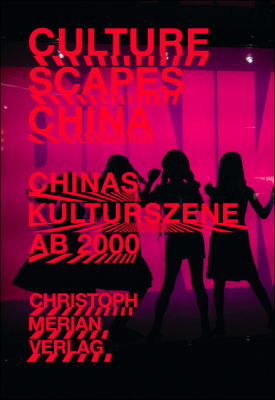
It has taken quite a while with quite some difficulties in between. Nevertheless, a nice product came out … And now, it is finally ready! The publication is printed and circulating.
The booklaunch has taken place in Basel and was a great success. To also round up our project here in Beijing and to celebrate our work, we are getting together with our illustrious circle of authors and all of you interested in the Chinese art scene.

The art scene in China and especially in Beijing is on the verge of a change. Culturescapes has gathered almost thirty authors taking a ten year's retrospective look at China's art scene. Chinese artists from different disciplines are described exclusively by authors who have been actively involved in the scene. Join us to hear about their work and experience in this vibrant art capital.
Focus
Our goal was to define the present by reviewing the past ten years and venture an outlook into future developments. The main focus lies on the subject of how artists deal with commemoration – because we saw a change of reflection after the hype and boom of the years between 2000 and 2008/9 after the Olympic Games and especially after the financial crisis. Artists are moving a step backwards for reflection no. We have been tracking the artist's ideas they had in 2009, the "year of remembrance" (Tian'anmen 20 years, PRCh 60 years, May-4th 90 years and so on).
Content
An overall introduction about the cultural industry provides the readers with background information and hopefully opens up new perspectives.
The main chapters are fine arts, film and photography, literature and theatre, music, and architecture – each written by around five authors controversially and complementarily visualising their own scope and experience of the past ten years. Each chapter includes a brief introduction with the necessary background of the specific discipline in China with the main focus in Beijing.
What we were looking for, on the one hand, was the development and reorganisation of the art scene with the most important happenings during this time, and, on the other hand, we aimed at grasping the personal an active involvement of the authors and artists and their own point of view – subjective and selective. We searched for analysis in form and content, illustrating this publication with pictorial sections for an additional visual understanding.
The participating authors and their input are:
Introduction
- Andrea Riemenschnitter about China's new cultural industry
Images (Fine Arts)
- Sabine Wang about the independent Chinese art scene
- Stefanie Thiedig interviewing the artist and curator Li Zhenhua
- Jasmin T. C. Kossenjans about prices of contemporary Chinese art
- Katharina Schneider-Roos interviewing the collector Uli Sigg
- Kim Karlsson about tradition in ascent in China
Pictures (Film and Photography)
- Katharina Schneider-Roos about the independent Chinese film
- Martin Brandes about Chinese film economy
- Lutz Reitemeier about "Tuya's Marriage"
- Shu Yang about performance photography
- Katharina Hesse's photographic reflections
- Stefanie Thiedig and Katharina Hesse about documentary photography and photo journalism
Dialogues (Literature and Theatre)
- Ingrid Fischer-Schreiber about Internet literature in China
- Patrizia van Daalen about Chinese publishing houses
- Martin Winter about Chinese literature
- Alison M. Friedman about modern dance in China
- Li Yinan about independent theatre in Beijing
- Cao Kefei and Christoph Lepschy about Chinese theatre and Europe
- Wu Wenguang about memory happening
Sounds (Music)
- Dorothea Adam about the alternative music scene in Beijing
- Yan Jun about electronic music in China
- Frank Kouwenhoven about traditional music in contemporary China
Spaces (Architecture)
- Barbara Münch about the contemporary architectural scene in China
- Barbara Münch interviewing the architect Zhu Pei

We are very much looking forward to seeing you next week on Thursday!
And, yes, I am really excited about it!!!
Tags für diesen Beitrag 这本文章的标记 – hier ist alles in einem zu finden: Publikation 出版, Text 文字, Gegenwart 当代, Künstler 艺术家, Malerei 绘画, Multimedia 多媒体, Film 电影, Fotografie 摄影, Literatur 文学, Theater 话剧, Musik 音乐, Architektur 建筑, Häufig gelesen 频看
Katharina Schneider-Roos and Stefanie Thiedig (eds.): Culturescapes China: Chinas Kuturszene ab 2000 (China's Cultural Scene Since 2000). Basel: Christoph Merian 2010.

It has taken quite a while with quite some difficulties in between. Nevertheless, a nice product came out … And now, it is finally ready! The publication is printed and circulating.
The booklaunch has taken place in Basel and was a great success. To also round up our project here in Beijing and to celebrate our work, we are getting together with our illustrious circle of authors and all of you interested in the Chinese art scene.

The art scene in China and especially in Beijing is on the verge of a change. Culturescapes has gathered almost thirty authors taking a ten year's retrospective look at China's art scene. Chinese artists from different disciplines are described exclusively by authors who have been actively involved in the scene. Join us to hear about their work and experience in this vibrant art capital.
Focus
Our goal was to define the present by reviewing the past ten years and venture an outlook into future developments. The main focus lies on the subject of how artists deal with commemoration – because we saw a change of reflection after the hype and boom of the years between 2000 and 2008/9 after the Olympic Games and especially after the financial crisis. Artists are moving a step backwards for reflection no. We have been tracking the artist's ideas they had in 2009, the "year of remembrance" (Tian'anmen 20 years, PRCh 60 years, May-4th 90 years and so on).
Content
An overall introduction about the cultural industry provides the readers with background information and hopefully opens up new perspectives.
The main chapters are fine arts, film and photography, literature and theatre, music, and architecture – each written by around five authors controversially and complementarily visualising their own scope and experience of the past ten years. Each chapter includes a brief introduction with the necessary background of the specific discipline in China with the main focus in Beijing.
What we were looking for, on the one hand, was the development and reorganisation of the art scene with the most important happenings during this time, and, on the other hand, we aimed at grasping the personal an active involvement of the authors and artists and their own point of view – subjective and selective. We searched for analysis in form and content, illustrating this publication with pictorial sections for an additional visual understanding.
The participating authors and their input are:
Introduction
- Andrea Riemenschnitter about China's new cultural industry
Images (Fine Arts)
- Sabine Wang about the independent Chinese art scene
- Stefanie Thiedig interviewing the artist and curator Li Zhenhua
- Jasmin T. C. Kossenjans about prices of contemporary Chinese art
- Katharina Schneider-Roos interviewing the collector Uli Sigg
- Kim Karlsson about tradition in ascent in China
Pictures (Film and Photography)
- Katharina Schneider-Roos about the independent Chinese film
- Martin Brandes about Chinese film economy
- Lutz Reitemeier about "Tuya's Marriage"
- Shu Yang about performance photography
- Katharina Hesse's photographic reflections
- Stefanie Thiedig and Katharina Hesse about documentary photography and photo journalism
Dialogues (Literature and Theatre)
- Ingrid Fischer-Schreiber about Internet literature in China
- Patrizia van Daalen about Chinese publishing houses
- Martin Winter about Chinese literature
- Alison M. Friedman about modern dance in China
- Li Yinan about independent theatre in Beijing
- Cao Kefei and Christoph Lepschy about Chinese theatre and Europe
- Wu Wenguang about memory happening
Sounds (Music)
- Dorothea Adam about the alternative music scene in Beijing
- Yan Jun about electronic music in China
- Frank Kouwenhoven about traditional music in contemporary China
Spaces (Architecture)
- Barbara Münch about the contemporary architectural scene in China
- Barbara Münch interviewing the architect Zhu Pei

We are very much looking forward to seeing you next week on Thursday!
And, yes, I am really excited about it!!!
Tags für diesen Beitrag 这本文章的标记 – hier ist alles in einem zu finden: Publikation 出版, Text 文字, Gegenwart 当代, Künstler 艺术家, Malerei 绘画, Multimedia 多媒体, Film 电影, Fotografie 摄影, Literatur 文学, Theater 话剧, Musik 音乐, Architektur 建筑, Häufig gelesen 频看
... link (0 Kommentare) ... comment
Sonntag, 19. September 2010
Mo., Sept. 20, "Meet & Greet"
youjia, 10:49h
If you happen to be in Shanghai on Monday and want to know about the "Future of Creative Industry", check this out, 7 pm at MoCA:

Please register via: vivianyutianzheng@gmail.com.
Tags für diesen Beitrag 这本文章的标记: Ankündigung 通知, Gegenwart 当代

Please register via: vivianyutianzheng@gmail.com.
Tags für diesen Beitrag 这本文章的标记: Ankündigung 通知, Gegenwart 当代
... link (0 Kommentare) ... comment
Mittwoch, 12. Mai 2010
Huang Rui über Abriss von Kunstvierteln in Beijing
youjia, 06:47h
Per E-Mail hat auch mich jetzt der Mitte Februar verschickte Artikel von Huang Rui 黄锐 (Mitglied der Gruppe Neue Sterne von 1979 und einer der Gründer von 798) erreicht. Recht lang, aber ich habe ihn im Netz noch nicht vollständig gefunden.
A City that Abandoned Artists
By HUANG Rui
Winter in Beijing is Especially Cold
After the 2008 “New Beijing, New Olympics,” in July 2009, Chaoyang District in the city of Beijing held the Chaoyang District Work Mobilization Conference to Promote Land Reserves and the Unification of Urban and Rural Areas. The conference resolved to promote the unification of the city and the countryside by reclaiming 26.2 square kilometers of countryside for the city land reserve. This area included seven villages in Dongba, Cuigezhuang, Sunhe, and Jinzhan. Regardless of whether these areas were pastures, fields, residential areas, or construction sites, they were all incorporated into the new urban expansion plan. Since the beginning of winter, any structure on this land has been demolished or is scheduled to be demolished; this single area includes nearly twenty art districts.
This year, winter in Beijing was especially cold. Following the largest blizzard in fifty years, many art districts faced forced evictions and the loss of electricity, water, and heat.
Chaoyang District is using the same kinds of methods as local governments nationwide; it has resorted to making money with land. The larger policy of economic development is meant to expand government interests. There is no need for further discussion of our doubt about and criticism of these basic policies. However, because Chaoyang District's current policy of demolishing buildings and moving residents involves nearly twenty art districts and more than one thousand artists, it is hurting a primary artery of cultural life in Beijing. Chaoyang District is also endangering the interests of the entirety of Chinese contemporary art, and so it has become a problem that urgently needs a solution.
These economic justifications are inadequate because China’s development drives the development of urban economies and culture. After the legal issues related to the 798 Art District were resolved by the Beijing municipal government, art districts such as the Liquor Factory, Huantie, Dongying, Zhengyang, 008, Caochangdi, and No. 1 Artbase all publicly responded to the local government’s land development plans. Residents of the districts personally invested in their construction. This expanded Beijing’s 798, this newly-established art district that had the halo of “21st century urban business card.”[1]
As for the impact of this decision, what recourse did the over one thousand artists who lost their livelihoods and their work spaces have? The response from the district government was simply a series of perfunctory and evasive phrases like “urban development program” and “complying with land law.”
Continuously Dissimilating Land
It is strange that while the art districts were being demolished, some called into question the legality of art districts, but no one over questioned the legality of the government’s decision. When the government demolition teams were invading the art districts with all their equipment, the artists all thought they had been tricked by the developers. Therefore, in public opinion, the government’s decrees became a substitute for what is lawful. Though this is a tragic situation, artists would rather deal with the government; it is the profit-seeking nature of developers that overturns the legitimacy of the space. But, if you only see the big heading “Chaoyang District Work Mobilization Conference to Promote Land Reserves and the Unification of Urban and Rural Areas,” then you know only part of the story. This heading is a government trick to transform the nature of land. In the past, the areas where the city and countryside met were not worth anything, but in the last thirty years, the majority of these areas have undergone the following stages of development. What started as farmland became green spaces to meet green targets for the City of Beijing. As a result, the value of this land increased slightly. Next, the land doubled as a green space and as a place for small-scale production or even recycling, and so it once again increased in value. Until after the neighborhood around the 798 became an urban phenomenon, many art districts appeared to the east and the north of 798. Around this time, the trend for land income to be changed to real estate income began. As before, these areas were collectively operated, they were not included in actions by the city. Therefore, the city did not benefit and government officials did not have achievements to report. Presently, collective ownership under the original policy in which land was divided by family has been changed to public ownership, which is defined in the constitution as “city land is state-owned.” In development plans for urban expansion, cities can turn what was originally farmland into public or commercial land to be sold at auction. Farmers on collective land all became city residents and accepted compensation at 21st century levels. In this Chaoyang District land conversion movement, nearly 110,000 farmers have traded a standard one-time payment for land that could earn them money year-round. You can see their calm and reserve as they quietly accept the
facts, like winter snowflakes falling to earth.
Art Space is Unreal
So why do artists continue to stay in the grey areas called art districts? They stay because of the unique nature of the artists’ profession. Art itself does not produce reality; artworks are the reappearance of the combination of skills and materials, intended to construct an idealized scene for the viewer. In fact, the distance created between artworks and reality or the opening of a new path has become the charm of artworks. It is exactly for this reason that artists are not interested in well-regulated space, such as one would find in a normal residential area; the atmosphere of the space could pull artistic creation back to reality.
China’s present conditions still have not created a true art market. Quantities of artworks, the tastes of collectors, estimations of value, and the shortcomings of the critical world are all impediments to the normal operation of an art market. To satisfy the ferocious appetite of speculators, artists continuously produce large works. Only large works can be exhibited in large spaces and retain the imposing “Made in China” air. This production method also determines that artists will favor large spaces like factories or warehouses. These kinds of spaces are easy to manage, because works can enter and leave freely, light is plentiful, and the surroundings have few of the impediments of common life. Why do artists all like to gather together to work? This is also due to the unique characteristics of urban society. First, space is scarce in cities, and there are only a few kinds of space from which to choose. Second, there is pressure from the neighborhood or the street. Generally, organized neighborhoods are not tolerant of different people and special circumstances. Third, there are legal issues. Artists are scattered individuals, but in reality they are a group that requires support in areas of legal and institutional uncertainty, and so artists think that the individual is powerless. They often make decisions based on the surface-level and inessential aspects of things, or they rely on the judgments of friends as a reference. Artists in many art districts may be from the same school or hometown.
However, artists’ lack of pragmatism about the law does not prove the soundness and rationality of the law and reality.
“We Don’t Need Artists Here! Get Out!”
This slogan was written in white on a wall along the road in the 798 Art District. It is especially eye-catching, hasty, and powerfully authentic, because it was placed across from several pledges by artists to protect their space in the art district. Things like this really do happen. This sentence, “We don’t need artists here” came from innocent emotion, which makes us think of the slogans from the 1960s and 1970s. “Purify the ranks of the proletariat!” Workers and farmers with revolutionary consciousness but no education were the primary motivation behind the Cultural Revolution. Perhaps this was true at that time, so we cannot help but rub our eyes and re-identify the present era. It is hard to believe that this state of affairs is real. We are once again clearly differentiating social identities. “We don’t need artists here!” Please do not doubt that this is currently happening. A large group of artists was chased into the wilderness during the coldest of times. They call out as they run. During the Warm Winter Art Program, they became the rogue proletariat. Mao Zedong once said that they were the class most unworthy of trust. “Once bought, they will become the enemies of the revolution.” We can compare these two governments which have produced different eras and these two movements, both of which consider artists garbage to be swept out the door. The former did it for the revolution; the latter has done it for capital. Because it is popular with the masses, the threat of capital is just as Walter Benjamin described movies, “All of the interest that the masses show in films is an interest in the recognition of the self and one’s class; which all suffer from a degenerative distortion.”[2]
Polish workers during the Cold War, disgusted with student demonstrations requesting freedom, had their own slogan “We want freedom, but we want bread more.” In the mid-1980s, under the guidance of the United Trade Union, they changed the slogan to “We want bread, but we want freedom more.”
Development has been swift, and Beijing, the capital of what was thirty years ago an agricultural nation, had already entered a period of rapid urbanization, a period of commodity circulation and information culture. And this Beijing is “the model for several hundred Chinese large and medium-sized cities, but in the future there will be more than one thousand of these cities.”[3] In response to the requirements of the new age, artists and all creators, including the presenters of creation, should increasingly become the masters of this new scene. We believe that we need only to strengthen the ranks of artists to make China better. Artists are distant from quality, standards, roles, judgment. They are the closest to illusion. We might as well start now, using the palette of glorious color and light of a harmonious society to affirm that artists are an advanced “class” with the time for advanced “productivity.”
Destruction in the Name of Success
Last year the People’s Republic of China held its 60th anniversary celebration, and I saw a familiar scene. I became a Young Pioneer or a Red Guard being inspected who had seen the leader Mao Zedong four times with my own eyes. As before, he stood, centered atop the Tian’anmen Gate, watching the fully equipped masses. What is amazing is that the revolutionary miracle that Mao had achieved was covered by another miracle that year; China had already become the world’s second most powerful economic force, and it will become the first before long. On this day, perhaps it was the dream of Mao as victor on Tian’anmen Gate.
However, if the miracles brought by creation and production are amazing, the power of destruction has also been uniquely successful. Because of the example of Mao Zedong’s era, we know that the success of Mao Zedong’s revolution brought about a disastrous destruction of productivity. He once said, “There is no construction without destruction. Destroy first, and construction will follow.” Mao and the political system that Mao founded more than thirty years ago are identical in their pursuit of success and victory. Even if they have different ideals, are all oriented towards one thing, success.
Those who believe in the cyclicality of history should once again refer to facts that can only be seen briefly. Taking Beijing as an example, the urbanization movements of the 1950s and 1960s not only tore down the Ming and Qing Dynasty city walls that had been criticized by the people, they also demolished a Yuan Dynasty temple that was more than 500 years old.[4] The religion, culture, and art transmitted by the temple were certainly the essence of Chinese civilization. It was this cultural ecology that made Beijing preeminent, but it no longer exists. In the thirty years since Reform and Opening, Chinese industrial civilization has made tremendous advances, and the people have started to experience unprecedented happiness and material comfort. But the reality behind the cultural structure of old Beijing then opened into the period of architectural foundations for the “New Beijing, New Olympics.” All kinds of inconveniences appeared in society, and very seldom were there people to challenge or to mention the destruction of this cultural ecology. In the media you often see “the destruction of the natural ecology,” likewise the natural and cultural ecologies formed in the course of history supports the spiritual ecology of city residents. All ecologies are mutually linked, complementing each other. In the Dao De Jing, Lao Zi says, “Misfortune depends on fortune. Fortune conceals misfortune.” The price of this new round of urban expansion is certainly a new round of environmental disasters.
Whose Cultural Ecology?
Our city has become an even more complex organization of skin and blood vessels. There are countless categories and systems of materials, production, products, circulation, order, emotion, exchange, belief, individual, family, organization, and society. But the manager of every field is a single thought, which is related to the value system of capital markets; the pure numbers of every field have an exchange value. Thus, the standards for sustainable ecology are like the ethical standards for justice, they cannot be produced by the market. The market's only formula is unit price (number) x efficiency x scale, while the calculations for ecological standards are completely the opposite. Perhaps these ecological relationships are still cannot be calculated by one or two clearly understood formulas, so we must wait for the inventions of researchers. But I believe that if emotions, organisms, and rationality are interwoven in urban life for a long period of time, you will certainly feel its presence, like the scene in the movie Avatar where life is summoned back. Ecological research, as a synthetic, interdisciplinary, newly established branch of learning, is still maturing. Whitman said in a poem, “Or I guess it is the handkerchief of the Lord, / A scented gift and remembrancer designedly dropt, / Bearing the owner’s name someway in the corners, that we / may see and remark, and say Whose?”[5]
“It Takes a Decade to Grow a Tree; It Takes a Century to Cultivate a Talented Person”
It has taken Caochangdi ten years to develop to its present state. The eventual rise of the 798 can be traced back to the temporary movement of CAFA’s sculpture department in 1995. As the Chinese saying goes, “It takes a decade to grow a tree; it takes a century to cultivate a talented person.” The ecology gradually formed in Chaoyang district by the 798, Caochangdi, and more than twenty other art districts is the pride of the area; it is an opportunity for history to bestow favor upon the City of Beijing. These chance opportunities involve extremely rational natural factors; is this not the “timeliness, favorable geography, and popularity” on the lips of the influential figures in these important demolition movements? Now, are the ecologies formed outside their plans not the cultural vegetation of Chaoyang District, the City of Beijing, and China as a whole? Please look at the disorderly construction of bare neighboring cities that have no cultural vegetation. Please look the places that have been abandoned by artists. Regardless of whether you look at Tianjin, Shijiazhuang, Baoding, Hubei, Sichuan, or Yunnan, just notice the population ratios between these areas and Beijing and the ratios between population and GDP and you will understand. Even if an area is fanatical about administration, the lack of cultural vegetation is a state of desolation akin to Huoyan Mountain. The linking of economic powers also needs the protection of cultural vegetation. Naturally formed cultural conditions can have a rational structure. The more intrinsic this structure and the more haphazardly it is created, the stronger its objective appeal. The majority of artists have said goodbye to their hometowns and come to this new land to live. And now, a drastic decision has cut their lifelines, using bulldozers to crush art spaces to and causing artists to move out into the cold streets and become a nomadic group. Is this an ordinary occurrence in our harmonious society? Can our city afford to abandon such a large number of artists?
If we can use economic capacity to build a forest of cement and glass walls and if we can use modern green methods to gloss over the ecology of “growing a tree in a decade” (and there are even doubts about our ability to do this), then can our local governments create the conditions to nurture talented people? The government can easily seek applicants for more than a thousand positions in construction or policing, but what about the thousands of artists who have gathered together in pursuit of human ideals? Please look; they do not have any administrative support. The construction of art spaces driven by economic gain is completely different from the surrounding environment. If you look at the intact Caochangdi Art District, you will understand what can be called life or subsistence; you will understand the difference between quality and quantity, vitality and chaos, development and sustainable development. The Caochangdi Art District has already provided a nearly standard solution.
I invite those planners who are advocates of demolition to walk in the art district on a clear morning; just go see the art spaces, you do not need any specialized knowledge of art.
Building Standards in Caochangdi
From a planning and design perspective, the local government in Beijing inevitably seeks the support of scientific data, and building standards are the most important of these data. To use the architecture in Caochangdi as an example, the majority of the spaces were constructed according to the standards of advanced international cities. As such, these buildings can be used for more than fifty years, and the level of planning far exceeds the Chaoyang District average. Of course, with the current speed of development, there will always be a ten year difference. The majority of the residential areas in Chaoyang District were built in the 1980s and 1990s, and many were built in the 1960s and 1970s. Disregarding the possibility and effectiveness of Caochangdi Art District as support for Beijing in its quest to become a
world city, if we only look at construction standards, why the government insists on demolishing what is progress and leaving what is backward is truly a mystery.
The majority of the buildings in the Caochangdi Art District were designed by Ai Weiwei. As a result, a variety of opinions have been expressed regarding the style, utility, and legal rationality of these buildings. But if you look at these buildings, Wangjing Park, and 798 Art District in sequence, you will think them beautiful and that they increase the richness of the scenery. The flow of the construction styles also has a natural order. From the 1950s Bauhaus-style architecture of the 798 to the 1980s architecture of the Panasonic TV factory, to Caochangdi, which was obviously built after 2000. This period of urbanization proves that you can see the transition in architecture with the passage of time. Why have many galleries chosen to move from the 798 to Caochangdi? This can be explained by the relationship between the changes of time and the production of space, creating a balance amidst adjustment.
Cherishing the urban ecology that we already have, especially these architectural ecologies which have already been evaluated and debated, causes positive growth in the life of a city. Protecting limited life does not imply that, through fighting for a certain life, one can understand the meaning of life and existence. In this era of peace and “harmony” people must believe in the basic structures of existence and nature to be able to consolidate a sustainable meaning for urban space.
From the 798 to Caochangdi
The municipal government working conference convened in January of this year proposed to build Beijing as a world city; comparative targets were metropolises in Westernized and industrialized powers, such as New York, Tokyo, and London. The government report said, “There are three steps to building a world city. First, we must build the basic framework of a modern international city. Second, this modern, international city will be completed by 2020. Third, by 2050, Beijing will have become a world city.” These lines say this, but museums are one of our city’s most important public cultural spaces; how many are there? From the explanation given by a senior member of staff at one museum, Beijing does not have even half the number of museums that Seoul has. I think that it does no harm to give a suggestion here. To complement the future planning of the capital, could we not plan new art and history museums from the 798 to Caochangdi, along a line east to Huantie? Is this not feasible?
It is advantageous for city planners to think twice about the current cultural environment. Establishing some new art or history museums shows off the charms of a world city. Public space for fruitful exchange between urban people will join organically with urban service industries. Elements such as crowds, recognition, and transportation must certainly be considered, as they must adapt to the environment. In recent years, these areas seem to have already involuntarily completed this refitting.
As a result, I suggest that the Panasonic factory building be transformed into an area for art and design. Also, two or three public museums or libraries should be established in Wangjing Park, using the existing natural surroundings to create a scenic area for visitors. Lastly, the area of Caochangdi to the east of the China National Film Museum should be considered for the establishment of at least three to five private art museums or one large art center. When added to the extant 798 and Caochangdi gallery areas, this region could become Beijing’s most concentrated public art area. This area would have an extremely rich urban cultural ecology, and become the capital's most magnificent scene for contemporary culture.
The Criterion for a World City
Beijing has decided to become a world city. On the Beijing map, Chaoyang District, extending to the north and east, has become a leader in terms of geography, the arts and sciences, and thought. Thus, Chaoyang District should have a greater respect for culture and art. When planning the future, the District should invite artists to enter a habitable city that provides a positive environment; this is the criterion for a world city. If you continue to drive away artists and demolish art districts, then in about ten years, what was once naturally vital will become an uninhabited wasteland and the hope of becoming a world city will never truly be realized. Thus, the future and present of Beijing will be no different; it will be a world-class city under construction.
The price we pay for the increased rationality of the city is not just a future cost. We hope that the Chaoyang District government will immediately stop the forced demolition of art districts. We further hope that the government will meet with artists’ representatives and the developers of these art districts, so that all three parties can sit and calmly talk about this issue. But first, we hope to see flexible thinking and a respectful attitude from a local government that is frighteningly paving the way for a world city.
February 12, 2010
[1] At the end of 2004, America’s Newsweek placed Beijing on their World Cities List as a result of the 798.
[2] Walter Benjamin, The Work of Art in the Age of Mechanical Reproduction, 1939.
[3] Neville Mars and Adrian Hornsby, The Chinese Dream, 2008.
[4] See the Bei Ping Street Map printed by Japanese publisher Heibonsha in 1939.
[5] Walt Whitman, “Song of Myself Part 6,” Leaves of Grass, 1855.
Tags für diesen Beitrag 这本文章的标记: Künstler 艺术家, Beijing 北京, Gegenwart 当代
A City that Abandoned Artists
By HUANG Rui
Winter in Beijing is Especially Cold
After the 2008 “New Beijing, New Olympics,” in July 2009, Chaoyang District in the city of Beijing held the Chaoyang District Work Mobilization Conference to Promote Land Reserves and the Unification of Urban and Rural Areas. The conference resolved to promote the unification of the city and the countryside by reclaiming 26.2 square kilometers of countryside for the city land reserve. This area included seven villages in Dongba, Cuigezhuang, Sunhe, and Jinzhan. Regardless of whether these areas were pastures, fields, residential areas, or construction sites, they were all incorporated into the new urban expansion plan. Since the beginning of winter, any structure on this land has been demolished or is scheduled to be demolished; this single area includes nearly twenty art districts.
This year, winter in Beijing was especially cold. Following the largest blizzard in fifty years, many art districts faced forced evictions and the loss of electricity, water, and heat.
Chaoyang District is using the same kinds of methods as local governments nationwide; it has resorted to making money with land. The larger policy of economic development is meant to expand government interests. There is no need for further discussion of our doubt about and criticism of these basic policies. However, because Chaoyang District's current policy of demolishing buildings and moving residents involves nearly twenty art districts and more than one thousand artists, it is hurting a primary artery of cultural life in Beijing. Chaoyang District is also endangering the interests of the entirety of Chinese contemporary art, and so it has become a problem that urgently needs a solution.
These economic justifications are inadequate because China’s development drives the development of urban economies and culture. After the legal issues related to the 798 Art District were resolved by the Beijing municipal government, art districts such as the Liquor Factory, Huantie, Dongying, Zhengyang, 008, Caochangdi, and No. 1 Artbase all publicly responded to the local government’s land development plans. Residents of the districts personally invested in their construction. This expanded Beijing’s 798, this newly-established art district that had the halo of “21st century urban business card.”[1]
As for the impact of this decision, what recourse did the over one thousand artists who lost their livelihoods and their work spaces have? The response from the district government was simply a series of perfunctory and evasive phrases like “urban development program” and “complying with land law.”
Continuously Dissimilating Land
It is strange that while the art districts were being demolished, some called into question the legality of art districts, but no one over questioned the legality of the government’s decision. When the government demolition teams were invading the art districts with all their equipment, the artists all thought they had been tricked by the developers. Therefore, in public opinion, the government’s decrees became a substitute for what is lawful. Though this is a tragic situation, artists would rather deal with the government; it is the profit-seeking nature of developers that overturns the legitimacy of the space. But, if you only see the big heading “Chaoyang District Work Mobilization Conference to Promote Land Reserves and the Unification of Urban and Rural Areas,” then you know only part of the story. This heading is a government trick to transform the nature of land. In the past, the areas where the city and countryside met were not worth anything, but in the last thirty years, the majority of these areas have undergone the following stages of development. What started as farmland became green spaces to meet green targets for the City of Beijing. As a result, the value of this land increased slightly. Next, the land doubled as a green space and as a place for small-scale production or even recycling, and so it once again increased in value. Until after the neighborhood around the 798 became an urban phenomenon, many art districts appeared to the east and the north of 798. Around this time, the trend for land income to be changed to real estate income began. As before, these areas were collectively operated, they were not included in actions by the city. Therefore, the city did not benefit and government officials did not have achievements to report. Presently, collective ownership under the original policy in which land was divided by family has been changed to public ownership, which is defined in the constitution as “city land is state-owned.” In development plans for urban expansion, cities can turn what was originally farmland into public or commercial land to be sold at auction. Farmers on collective land all became city residents and accepted compensation at 21st century levels. In this Chaoyang District land conversion movement, nearly 110,000 farmers have traded a standard one-time payment for land that could earn them money year-round. You can see their calm and reserve as they quietly accept the
facts, like winter snowflakes falling to earth.
Art Space is Unreal
So why do artists continue to stay in the grey areas called art districts? They stay because of the unique nature of the artists’ profession. Art itself does not produce reality; artworks are the reappearance of the combination of skills and materials, intended to construct an idealized scene for the viewer. In fact, the distance created between artworks and reality or the opening of a new path has become the charm of artworks. It is exactly for this reason that artists are not interested in well-regulated space, such as one would find in a normal residential area; the atmosphere of the space could pull artistic creation back to reality.
China’s present conditions still have not created a true art market. Quantities of artworks, the tastes of collectors, estimations of value, and the shortcomings of the critical world are all impediments to the normal operation of an art market. To satisfy the ferocious appetite of speculators, artists continuously produce large works. Only large works can be exhibited in large spaces and retain the imposing “Made in China” air. This production method also determines that artists will favor large spaces like factories or warehouses. These kinds of spaces are easy to manage, because works can enter and leave freely, light is plentiful, and the surroundings have few of the impediments of common life. Why do artists all like to gather together to work? This is also due to the unique characteristics of urban society. First, space is scarce in cities, and there are only a few kinds of space from which to choose. Second, there is pressure from the neighborhood or the street. Generally, organized neighborhoods are not tolerant of different people and special circumstances. Third, there are legal issues. Artists are scattered individuals, but in reality they are a group that requires support in areas of legal and institutional uncertainty, and so artists think that the individual is powerless. They often make decisions based on the surface-level and inessential aspects of things, or they rely on the judgments of friends as a reference. Artists in many art districts may be from the same school or hometown.
However, artists’ lack of pragmatism about the law does not prove the soundness and rationality of the law and reality.
“We Don’t Need Artists Here! Get Out!”
This slogan was written in white on a wall along the road in the 798 Art District. It is especially eye-catching, hasty, and powerfully authentic, because it was placed across from several pledges by artists to protect their space in the art district. Things like this really do happen. This sentence, “We don’t need artists here” came from innocent emotion, which makes us think of the slogans from the 1960s and 1970s. “Purify the ranks of the proletariat!” Workers and farmers with revolutionary consciousness but no education were the primary motivation behind the Cultural Revolution. Perhaps this was true at that time, so we cannot help but rub our eyes and re-identify the present era. It is hard to believe that this state of affairs is real. We are once again clearly differentiating social identities. “We don’t need artists here!” Please do not doubt that this is currently happening. A large group of artists was chased into the wilderness during the coldest of times. They call out as they run. During the Warm Winter Art Program, they became the rogue proletariat. Mao Zedong once said that they were the class most unworthy of trust. “Once bought, they will become the enemies of the revolution.” We can compare these two governments which have produced different eras and these two movements, both of which consider artists garbage to be swept out the door. The former did it for the revolution; the latter has done it for capital. Because it is popular with the masses, the threat of capital is just as Walter Benjamin described movies, “All of the interest that the masses show in films is an interest in the recognition of the self and one’s class; which all suffer from a degenerative distortion.”[2]
Polish workers during the Cold War, disgusted with student demonstrations requesting freedom, had their own slogan “We want freedom, but we want bread more.” In the mid-1980s, under the guidance of the United Trade Union, they changed the slogan to “We want bread, but we want freedom more.”
Development has been swift, and Beijing, the capital of what was thirty years ago an agricultural nation, had already entered a period of rapid urbanization, a period of commodity circulation and information culture. And this Beijing is “the model for several hundred Chinese large and medium-sized cities, but in the future there will be more than one thousand of these cities.”[3] In response to the requirements of the new age, artists and all creators, including the presenters of creation, should increasingly become the masters of this new scene. We believe that we need only to strengthen the ranks of artists to make China better. Artists are distant from quality, standards, roles, judgment. They are the closest to illusion. We might as well start now, using the palette of glorious color and light of a harmonious society to affirm that artists are an advanced “class” with the time for advanced “productivity.”
Destruction in the Name of Success
Last year the People’s Republic of China held its 60th anniversary celebration, and I saw a familiar scene. I became a Young Pioneer or a Red Guard being inspected who had seen the leader Mao Zedong four times with my own eyes. As before, he stood, centered atop the Tian’anmen Gate, watching the fully equipped masses. What is amazing is that the revolutionary miracle that Mao had achieved was covered by another miracle that year; China had already become the world’s second most powerful economic force, and it will become the first before long. On this day, perhaps it was the dream of Mao as victor on Tian’anmen Gate.
However, if the miracles brought by creation and production are amazing, the power of destruction has also been uniquely successful. Because of the example of Mao Zedong’s era, we know that the success of Mao Zedong’s revolution brought about a disastrous destruction of productivity. He once said, “There is no construction without destruction. Destroy first, and construction will follow.” Mao and the political system that Mao founded more than thirty years ago are identical in their pursuit of success and victory. Even if they have different ideals, are all oriented towards one thing, success.
Those who believe in the cyclicality of history should once again refer to facts that can only be seen briefly. Taking Beijing as an example, the urbanization movements of the 1950s and 1960s not only tore down the Ming and Qing Dynasty city walls that had been criticized by the people, they also demolished a Yuan Dynasty temple that was more than 500 years old.[4] The religion, culture, and art transmitted by the temple were certainly the essence of Chinese civilization. It was this cultural ecology that made Beijing preeminent, but it no longer exists. In the thirty years since Reform and Opening, Chinese industrial civilization has made tremendous advances, and the people have started to experience unprecedented happiness and material comfort. But the reality behind the cultural structure of old Beijing then opened into the period of architectural foundations for the “New Beijing, New Olympics.” All kinds of inconveniences appeared in society, and very seldom were there people to challenge or to mention the destruction of this cultural ecology. In the media you often see “the destruction of the natural ecology,” likewise the natural and cultural ecologies formed in the course of history supports the spiritual ecology of city residents. All ecologies are mutually linked, complementing each other. In the Dao De Jing, Lao Zi says, “Misfortune depends on fortune. Fortune conceals misfortune.” The price of this new round of urban expansion is certainly a new round of environmental disasters.
Whose Cultural Ecology?
Our city has become an even more complex organization of skin and blood vessels. There are countless categories and systems of materials, production, products, circulation, order, emotion, exchange, belief, individual, family, organization, and society. But the manager of every field is a single thought, which is related to the value system of capital markets; the pure numbers of every field have an exchange value. Thus, the standards for sustainable ecology are like the ethical standards for justice, they cannot be produced by the market. The market's only formula is unit price (number) x efficiency x scale, while the calculations for ecological standards are completely the opposite. Perhaps these ecological relationships are still cannot be calculated by one or two clearly understood formulas, so we must wait for the inventions of researchers. But I believe that if emotions, organisms, and rationality are interwoven in urban life for a long period of time, you will certainly feel its presence, like the scene in the movie Avatar where life is summoned back. Ecological research, as a synthetic, interdisciplinary, newly established branch of learning, is still maturing. Whitman said in a poem, “Or I guess it is the handkerchief of the Lord, / A scented gift and remembrancer designedly dropt, / Bearing the owner’s name someway in the corners, that we / may see and remark, and say Whose?”[5]
“It Takes a Decade to Grow a Tree; It Takes a Century to Cultivate a Talented Person”
It has taken Caochangdi ten years to develop to its present state. The eventual rise of the 798 can be traced back to the temporary movement of CAFA’s sculpture department in 1995. As the Chinese saying goes, “It takes a decade to grow a tree; it takes a century to cultivate a talented person.” The ecology gradually formed in Chaoyang district by the 798, Caochangdi, and more than twenty other art districts is the pride of the area; it is an opportunity for history to bestow favor upon the City of Beijing. These chance opportunities involve extremely rational natural factors; is this not the “timeliness, favorable geography, and popularity” on the lips of the influential figures in these important demolition movements? Now, are the ecologies formed outside their plans not the cultural vegetation of Chaoyang District, the City of Beijing, and China as a whole? Please look at the disorderly construction of bare neighboring cities that have no cultural vegetation. Please look the places that have been abandoned by artists. Regardless of whether you look at Tianjin, Shijiazhuang, Baoding, Hubei, Sichuan, or Yunnan, just notice the population ratios between these areas and Beijing and the ratios between population and GDP and you will understand. Even if an area is fanatical about administration, the lack of cultural vegetation is a state of desolation akin to Huoyan Mountain. The linking of economic powers also needs the protection of cultural vegetation. Naturally formed cultural conditions can have a rational structure. The more intrinsic this structure and the more haphazardly it is created, the stronger its objective appeal. The majority of artists have said goodbye to their hometowns and come to this new land to live. And now, a drastic decision has cut their lifelines, using bulldozers to crush art spaces to and causing artists to move out into the cold streets and become a nomadic group. Is this an ordinary occurrence in our harmonious society? Can our city afford to abandon such a large number of artists?
If we can use economic capacity to build a forest of cement and glass walls and if we can use modern green methods to gloss over the ecology of “growing a tree in a decade” (and there are even doubts about our ability to do this), then can our local governments create the conditions to nurture talented people? The government can easily seek applicants for more than a thousand positions in construction or policing, but what about the thousands of artists who have gathered together in pursuit of human ideals? Please look; they do not have any administrative support. The construction of art spaces driven by economic gain is completely different from the surrounding environment. If you look at the intact Caochangdi Art District, you will understand what can be called life or subsistence; you will understand the difference between quality and quantity, vitality and chaos, development and sustainable development. The Caochangdi Art District has already provided a nearly standard solution.
I invite those planners who are advocates of demolition to walk in the art district on a clear morning; just go see the art spaces, you do not need any specialized knowledge of art.
Building Standards in Caochangdi
From a planning and design perspective, the local government in Beijing inevitably seeks the support of scientific data, and building standards are the most important of these data. To use the architecture in Caochangdi as an example, the majority of the spaces were constructed according to the standards of advanced international cities. As such, these buildings can be used for more than fifty years, and the level of planning far exceeds the Chaoyang District average. Of course, with the current speed of development, there will always be a ten year difference. The majority of the residential areas in Chaoyang District were built in the 1980s and 1990s, and many were built in the 1960s and 1970s. Disregarding the possibility and effectiveness of Caochangdi Art District as support for Beijing in its quest to become a
world city, if we only look at construction standards, why the government insists on demolishing what is progress and leaving what is backward is truly a mystery.
The majority of the buildings in the Caochangdi Art District were designed by Ai Weiwei. As a result, a variety of opinions have been expressed regarding the style, utility, and legal rationality of these buildings. But if you look at these buildings, Wangjing Park, and 798 Art District in sequence, you will think them beautiful and that they increase the richness of the scenery. The flow of the construction styles also has a natural order. From the 1950s Bauhaus-style architecture of the 798 to the 1980s architecture of the Panasonic TV factory, to Caochangdi, which was obviously built after 2000. This period of urbanization proves that you can see the transition in architecture with the passage of time. Why have many galleries chosen to move from the 798 to Caochangdi? This can be explained by the relationship between the changes of time and the production of space, creating a balance amidst adjustment.
Cherishing the urban ecology that we already have, especially these architectural ecologies which have already been evaluated and debated, causes positive growth in the life of a city. Protecting limited life does not imply that, through fighting for a certain life, one can understand the meaning of life and existence. In this era of peace and “harmony” people must believe in the basic structures of existence and nature to be able to consolidate a sustainable meaning for urban space.
From the 798 to Caochangdi
The municipal government working conference convened in January of this year proposed to build Beijing as a world city; comparative targets were metropolises in Westernized and industrialized powers, such as New York, Tokyo, and London. The government report said, “There are three steps to building a world city. First, we must build the basic framework of a modern international city. Second, this modern, international city will be completed by 2020. Third, by 2050, Beijing will have become a world city.” These lines say this, but museums are one of our city’s most important public cultural spaces; how many are there? From the explanation given by a senior member of staff at one museum, Beijing does not have even half the number of museums that Seoul has. I think that it does no harm to give a suggestion here. To complement the future planning of the capital, could we not plan new art and history museums from the 798 to Caochangdi, along a line east to Huantie? Is this not feasible?
It is advantageous for city planners to think twice about the current cultural environment. Establishing some new art or history museums shows off the charms of a world city. Public space for fruitful exchange between urban people will join organically with urban service industries. Elements such as crowds, recognition, and transportation must certainly be considered, as they must adapt to the environment. In recent years, these areas seem to have already involuntarily completed this refitting.
As a result, I suggest that the Panasonic factory building be transformed into an area for art and design. Also, two or three public museums or libraries should be established in Wangjing Park, using the existing natural surroundings to create a scenic area for visitors. Lastly, the area of Caochangdi to the east of the China National Film Museum should be considered for the establishment of at least three to five private art museums or one large art center. When added to the extant 798 and Caochangdi gallery areas, this region could become Beijing’s most concentrated public art area. This area would have an extremely rich urban cultural ecology, and become the capital's most magnificent scene for contemporary culture.
The Criterion for a World City
Beijing has decided to become a world city. On the Beijing map, Chaoyang District, extending to the north and east, has become a leader in terms of geography, the arts and sciences, and thought. Thus, Chaoyang District should have a greater respect for culture and art. When planning the future, the District should invite artists to enter a habitable city that provides a positive environment; this is the criterion for a world city. If you continue to drive away artists and demolish art districts, then in about ten years, what was once naturally vital will become an uninhabited wasteland and the hope of becoming a world city will never truly be realized. Thus, the future and present of Beijing will be no different; it will be a world-class city under construction.
The price we pay for the increased rationality of the city is not just a future cost. We hope that the Chaoyang District government will immediately stop the forced demolition of art districts. We further hope that the government will meet with artists’ representatives and the developers of these art districts, so that all three parties can sit and calmly talk about this issue. But first, we hope to see flexible thinking and a respectful attitude from a local government that is frighteningly paving the way for a world city.
February 12, 2010
[1] At the end of 2004, America’s Newsweek placed Beijing on their World Cities List as a result of the 798.
[2] Walter Benjamin, The Work of Art in the Age of Mechanical Reproduction, 1939.
[3] Neville Mars and Adrian Hornsby, The Chinese Dream, 2008.
[4] See the Bei Ping Street Map printed by Japanese publisher Heibonsha in 1939.
[5] Walt Whitman, “Song of Myself Part 6,” Leaves of Grass, 1855.
Tags für diesen Beitrag 这本文章的标记: Künstler 艺术家, Beijing 北京, Gegenwart 当代
... link (0 Kommentare) ... comment
Montag, 10. Mai 2010
Double Infinity: “The Last Two Decades Revisited”
youjia, 12:25h
Double Infinity: “The Last Two Decades Revisited”
Saturday 15 May (11am - 5pm) and Sunday 16 May 2010 (11am – 5pm) Dutch Cultural Centre at 800 Chang De Lu at Changping Lu Shanghai
《双倍无限:过去二十年回顾》
2010年5月15日(周六,11点至17点)和5月16日(周日,11点至17点), 荷兰文化中心,上海常德路800号(近昌平路)
With participants:
Chen Tong, Li Zhenhua, Alexander Brandt, Hu Jieming, Song Haidong, Carol Yinghua Lu, Jin Shan, Georg Schöllhammer, Zhang Peili, Hyunjin Kim, Dr. Pieter van Wesemael, 毕月, Tsuyoshi Ozawa (of Xijing Men), Dr. Paul Gladston, Dr. Gao Shiming, and more. Curators Charles Esche, Defne Ayas, Davide Quadrio, as well as Carol Yinghua Lu, will moderate. During this period, a film screening by Asia Art Achive and performances by Surasi Kusolwong and Julika Rudelius will also take place.
参与者:
陈侗、李振华、飞苹果、胡介鸣、宋海东、卢迎华、靳山、Georg Schöllhammer、刘建华、张培力、Hyunjin Kim、Georg Schöllhammer ,Paul Gladstone, Pieter van Wesemael、 高士明, 毕月、小泽刚(西京人组合成员)等。策展人Charles Esche、Defne Ayas、乐大豆以及卢迎华将主持会议。在此期间,还将举行亚洲艺术文献库的影片放映活动以及Surasi Kusolwong和Julika Rudelius的行为艺术项目。
Translation will be provided.
现场将提供翻译服务。
More information on www.arthubasia.org
详细信息,请登录www.arthubasia.org
Tags für diesen Beitrag 这本文章的标记: Ankündigung 通知, Gegenwart 当代
Saturday 15 May (11am - 5pm) and Sunday 16 May 2010 (11am – 5pm) Dutch Cultural Centre at 800 Chang De Lu at Changping Lu Shanghai
《双倍无限:过去二十年回顾》
2010年5月15日(周六,11点至17点)和5月16日(周日,11点至17点), 荷兰文化中心,上海常德路800号(近昌平路)
With participants:
Chen Tong, Li Zhenhua, Alexander Brandt, Hu Jieming, Song Haidong, Carol Yinghua Lu, Jin Shan, Georg Schöllhammer, Zhang Peili, Hyunjin Kim, Dr. Pieter van Wesemael, 毕月, Tsuyoshi Ozawa (of Xijing Men), Dr. Paul Gladston, Dr. Gao Shiming, and more. Curators Charles Esche, Defne Ayas, Davide Quadrio, as well as Carol Yinghua Lu, will moderate. During this period, a film screening by Asia Art Achive and performances by Surasi Kusolwong and Julika Rudelius will also take place.
参与者:
陈侗、李振华、飞苹果、胡介鸣、宋海东、卢迎华、靳山、Georg Schöllhammer、刘建华、张培力、Hyunjin Kim、Georg Schöllhammer ,Paul Gladstone, Pieter van Wesemael、 高士明, 毕月、小泽刚(西京人组合成员)等。策展人Charles Esche、Defne Ayas、乐大豆以及卢迎华将主持会议。在此期间,还将举行亚洲艺术文献库的影片放映活动以及Surasi Kusolwong和Julika Rudelius的行为艺术项目。
Translation will be provided.
现场将提供翻译服务。
More information on www.arthubasia.org
详细信息,请登录www.arthubasia.org
Tags für diesen Beitrag 这本文章的标记: Ankündigung 通知, Gegenwart 当代
... link (0 Kommentare) ... comment
Donnerstag, 6. Mai 2010
Unterwegs auf der EXPO und ein wenig in Shanghai
youjia, 11:38h
Zunächst noch ein Bild von der Eröffnungsfeier am 1. Mai - den Fernseher abfotografiert, lang lebe CCTV:
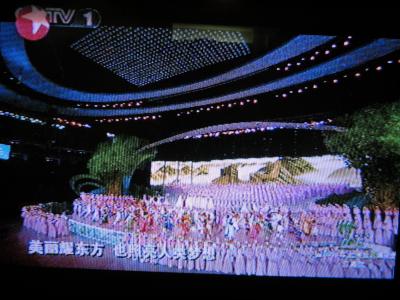
美丽?东方,也照亮人类梦想
Der schöne Orient, erleuchtet den Menschheitstraum
(Und das nur eine Zeile dessen, was die ganze Zeit geträllert wurde.)
Und hier nun, weshalb ich überhaupt auf der EXPO bin: Das "Deutsch-Chinesische Haus" von DuC ("Deutschland und China - Gemeinsam in Bewegung"), Station EXPO 2010 Shanghai ...
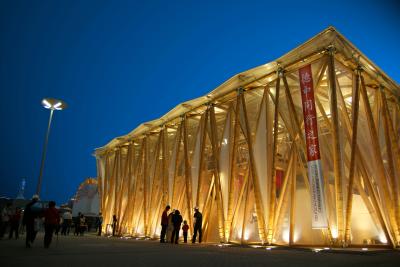
Foto von Zhang Chongning 张崇宁.
Gleich am ersten Tag gab es dann einigen VIP-Besuch mit VIP-Ausweisen und auch sonst allem üblichen VIP-gewippe:
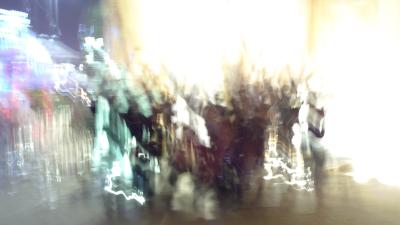
Foto von Jiang Tao 姜涛.
Meine Arbeitseinheit, mit der es sich einerseits wunderbar arbeiten und andererseits abends gut über die Promenade flanieren lässt, hier bei den Dänen:
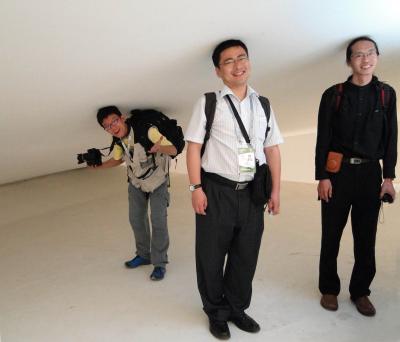
(V.l.n.r.) Zhang Chongning, Du Xingqiao, Jiang Tao.
Abgesehen von DXQ, den vorrangig die Souvenirshops der Ländervertretungen interessieren, hat uns allen der England-Pavillon am besten gefallen - zumindest von außen, von innen sind die Pavillons ziemlich ähnlich, die meisten setzen auf Lichtdesign, beinahe überall gibt es urban-großformatige "Stadtgesichter", die den Besuchern das wirkliche Leben vermitteln sollen. Ganz nett, aber auch nicht mehr wirklich neu und auf die Dauer ziemlich eintönig. Hier aber der tolle Seeigel Englands:
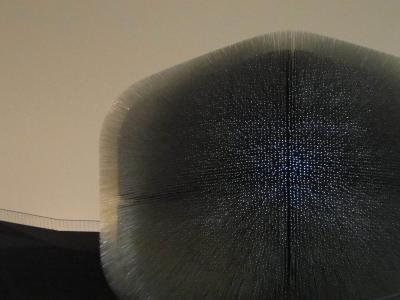
Zu Deutschland werde ich mich ausschweigen, "Markting für Deutschland", "Land der Ideen", "balancity" (das allerdings ist wieder ganz interessant, auf Chinesisch haben sies in "harmoncity", hexie dushi 和谐都市, umgestülpt, vermutlich, um der chinesischen Regierung zu gefallen, interkulturell sehr wertvoll ...), das ist mir dann doch alles ein wenig krampfhaft auf "Wir sind ein so unglaublich tolles, innovatives Land" gewollt. Das war jetzt ein Halb-Schweigen, und bevor ... hier das Bild:
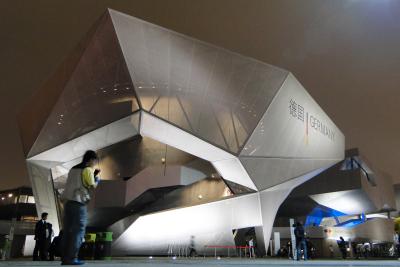
Die Spanier präsentieren ein 6,5 Meter großes Riesenbaby, live-animiert, die Deutschen ihre Riesenkugel, die Italiener einen Riesenpradastuhl (oder war das Riesen-Louis-Vuitton-Irgendwas bei den Franzosen?, der letzte ist nur Hörensagen, bei unseren geografisch westlichen Nachbarn war wegen Keilerei gestern der Pavillon geschlossen, unsere ebenfalls geografisch Über-den-Sprung südlichen Nachbarn haben uns ziemlich bald aus ihrem Gebilde herauskomplimentiert) - einen an der Macke haben sie alle, obwohl ich gerade bei Spanien und Italien (hier nicht wegen Riesen-X, ich meine, nur etwas mächtig designmäßig Schwarzes von außen gesehen zu haben, müsste dieser Pavillon gewesen sein, sondern hier wegen des allgemeinen Auftritts) echt gut gelacht habe, Deutschland war natürlich wieder zu verkrampft.
Italiens Auftritt im Inneren des Pavillons gleicht einer Messe, so immens sind dort alle denkbaren italienischen Produkte auf Mallähnlichen Etagen drappiert. Im unteren Stockwerk kann bewundert werden, was italienische Robotik so schafft (da fällt mir ein, dass ich noch zu den Japanern wollte, um mir die Violine spielenden Roboter anzusehen) - als nicht übermäßig politisch sensibel ist hier die Demontage der chinesischen Flagge zu betrachten:
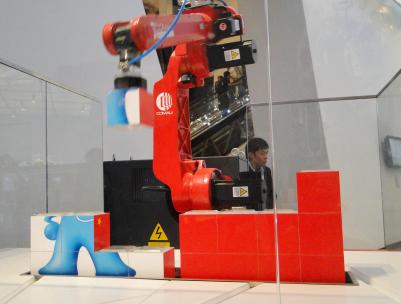
So, weg von der EXPO. Katharina, die gerade ebenfalls EXPO-mäßig in der Stadt ist, bringt mich zum Tianzifang 田子坊, dem Kunst und dazugehörigen Lebensgefühl verkaufenden, sich in schönen, Shanghai typisch engen Gassen verlaufenden Viertel mitten in der Stadt nahe der französischen Konzession. Gar nicht mal so extrem überlaufen - vielleicht, weil die Massen sich die Tage über andere Plätze schieben - lässt es sich hier gut aushalten.
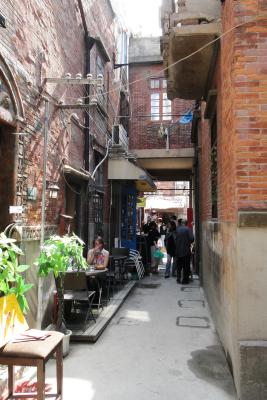
Für Shanghai typisch sind die überall, aus allen Fenstern hängenden Klamotten. Mir gefällt das.
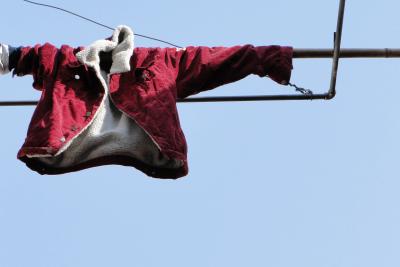
Außerdem gefällt mir, dass es so schön grün ist in Shanghai.
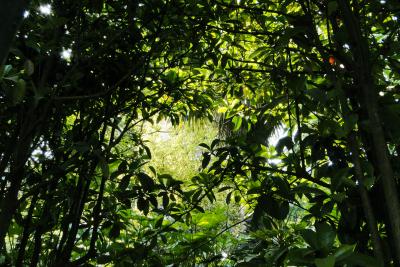
Am hiesigen Kitsch kommt man aber auch nicht vorbei.
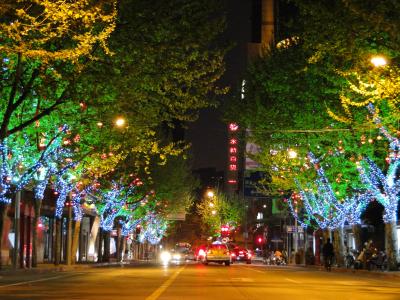
Tags für diesen Beitrag 这本文章的标记: Reise 专程, Unterwegs 溜达, Architektur 建筑, Fotografie 摄影

美丽?东方,也照亮人类梦想
Der schöne Orient, erleuchtet den Menschheitstraum
(Und das nur eine Zeile dessen, was die ganze Zeit geträllert wurde.)
Und hier nun, weshalb ich überhaupt auf der EXPO bin: Das "Deutsch-Chinesische Haus" von DuC ("Deutschland und China - Gemeinsam in Bewegung"), Station EXPO 2010 Shanghai ...

Foto von Zhang Chongning 张崇宁.
Gleich am ersten Tag gab es dann einigen VIP-Besuch mit VIP-Ausweisen und auch sonst allem üblichen VIP-gewippe:

Foto von Jiang Tao 姜涛.
Meine Arbeitseinheit, mit der es sich einerseits wunderbar arbeiten und andererseits abends gut über die Promenade flanieren lässt, hier bei den Dänen:

(V.l.n.r.) Zhang Chongning, Du Xingqiao, Jiang Tao.
Abgesehen von DXQ, den vorrangig die Souvenirshops der Ländervertretungen interessieren, hat uns allen der England-Pavillon am besten gefallen - zumindest von außen, von innen sind die Pavillons ziemlich ähnlich, die meisten setzen auf Lichtdesign, beinahe überall gibt es urban-großformatige "Stadtgesichter", die den Besuchern das wirkliche Leben vermitteln sollen. Ganz nett, aber auch nicht mehr wirklich neu und auf die Dauer ziemlich eintönig. Hier aber der tolle Seeigel Englands:

Zu Deutschland werde ich mich ausschweigen, "Markting für Deutschland", "Land der Ideen", "balancity" (das allerdings ist wieder ganz interessant, auf Chinesisch haben sies in "harmoncity", hexie dushi 和谐都市, umgestülpt, vermutlich, um der chinesischen Regierung zu gefallen, interkulturell sehr wertvoll ...), das ist mir dann doch alles ein wenig krampfhaft auf "Wir sind ein so unglaublich tolles, innovatives Land" gewollt. Das war jetzt ein Halb-Schweigen, und bevor ... hier das Bild:

Die Spanier präsentieren ein 6,5 Meter großes Riesenbaby, live-animiert, die Deutschen ihre Riesenkugel, die Italiener einen Riesenpradastuhl (oder war das Riesen-Louis-Vuitton-Irgendwas bei den Franzosen?, der letzte ist nur Hörensagen, bei unseren geografisch westlichen Nachbarn war wegen Keilerei gestern der Pavillon geschlossen, unsere ebenfalls geografisch Über-den-Sprung südlichen Nachbarn haben uns ziemlich bald aus ihrem Gebilde herauskomplimentiert) - einen an der Macke haben sie alle, obwohl ich gerade bei Spanien und Italien (hier nicht wegen Riesen-X, ich meine, nur etwas mächtig designmäßig Schwarzes von außen gesehen zu haben, müsste dieser Pavillon gewesen sein, sondern hier wegen des allgemeinen Auftritts) echt gut gelacht habe, Deutschland war natürlich wieder zu verkrampft.
Italiens Auftritt im Inneren des Pavillons gleicht einer Messe, so immens sind dort alle denkbaren italienischen Produkte auf Mallähnlichen Etagen drappiert. Im unteren Stockwerk kann bewundert werden, was italienische Robotik so schafft (da fällt mir ein, dass ich noch zu den Japanern wollte, um mir die Violine spielenden Roboter anzusehen) - als nicht übermäßig politisch sensibel ist hier die Demontage der chinesischen Flagge zu betrachten:

So, weg von der EXPO. Katharina, die gerade ebenfalls EXPO-mäßig in der Stadt ist, bringt mich zum Tianzifang 田子坊, dem Kunst und dazugehörigen Lebensgefühl verkaufenden, sich in schönen, Shanghai typisch engen Gassen verlaufenden Viertel mitten in der Stadt nahe der französischen Konzession. Gar nicht mal so extrem überlaufen - vielleicht, weil die Massen sich die Tage über andere Plätze schieben - lässt es sich hier gut aushalten.

Für Shanghai typisch sind die überall, aus allen Fenstern hängenden Klamotten. Mir gefällt das.

Außerdem gefällt mir, dass es so schön grün ist in Shanghai.

Am hiesigen Kitsch kommt man aber auch nicht vorbei.

Tags für diesen Beitrag 这本文章的标记: Reise 专程, Unterwegs 溜达, Architektur 建筑, Fotografie 摄影
... link (0 Kommentare) ... comment
Montag, 3. Mai 2010
Die EXPO ...
youjia, 09:27h
Die EXPO gebührendlich zu beschreiben, übersteigt leider meine diplomatischen Fähigkeiten. Deshalb werde ich mich hier für meine Zeit in Shanghai darauf beschränken, ein paar Bilder hochzuladen und ein wenig Shanghai-Drumherum darzustellen. Jetzt muss ich allerdings wieder auf den Platz, heute Abend werde ich versuchen, mir ein wenig Zeit zu nehmen.
Tags für diesen Beitrag 这本文章的标记: Reise 专程
Tags für diesen Beitrag 这本文章的标记: Reise 专程
... link (0 Kommentare) ... comment
Freitag, 30. April 2010
DuC ist wieder am Start: Dieses Mal auf der EXPO
youjia, 13:39h
Es heißt wieder DuC, "Deutschland und China - Gemeinsam in Bewegung", diesmal die offiziell letzte Station, genannt "Station EXPO 2010 Shanghai".
Nach Shenyang (Frühjahr 2009) und Wuhan (Herbst 2009), zwei extrem anstrengenden Stationen, könnte es dieses Mal etwas entspannter zugehen - schließlich sind wir als so genanntes "Struktürchen" (Pavillon dürfen sich nur die Ländervertretungen nennen) nur mit einem Gebilde, dem "Deutsch-Chinesischen Haus", dabei. Unten gibts auf 250 qm (verzeiht diesen weiteren Einschub, aber ich weiß nicht, weshalb nicht von 249 oder 240 qm gesprochen wird, denn 250 sagt man auf Chinesisch zu jemandem, den man für einen Idioten hält - 你真二百五), also dort gibt es das tatsächlich komplex durchdachte Stadtspiel namens "Stadtspiel" und auf der 2. Etage einen Konferenz- bzw. Forumsbereich. Außerhalb des Geländes läuft noch die "Urban Akademie" und ein bisschen Kulturprogramm.
Auf www.deutschland-und-china.com berichte ich für die deutsche Seite über das, was so anfällt.
Auf diesem Blog geht es etwas informeller zu. Im Flugzeug von Beijing nach SH Hongqiao saß heute morgen beispielsweise eine Dame neben mir, die erst ihr Handy ausgeschaltet hat, als wir uns schon auf dem Rollfeld befanden, der Ton der Stewardess harsch wurde und ich bereits davon ausging, dass sie ihr das Handy gleich aus der Hand nimmt - vorher gingen aufgeregte Anrufe ein und aus. Verschmitzt grinste sie mich an und berichtete dann frei von der Leber weg, wie viel noch für die heute Abend von 20 bis 22 Uhr stattfindende Eröffnungsveranstaltung zu tun wäre. Das wird ein ähnlich der Eröffnungszeremonie zu den Olympischen Spielen in BJ stattfindendes Großereignis mit all den bekannten "lingdaos", den obersten Bossen (Hu Jintao und Genossen) - von Myriaden von Menschen im Fernsehen verfolgt. Mal sehen, wohin es mich dafür verschlägt.
Gerade in Shanghai angekommen, sitze ich hier in meinem Service Appartment exakte 9,5 km entfernt von der EXPO. Der Internetanschluss läuft reibungslos, sogar parallel an beiden Computern. Ich bin begeistert. Morgen treffen wir, das DuC-Kommunikationsteam, uns um 8 Uhr vor Eingang 7 und hoffen, hineingelassen zu werden. Na, dann kanns ja losgehen.
Tags für diesen Beitrag 这本文章的标记: Reise 专程
Nach Shenyang (Frühjahr 2009) und Wuhan (Herbst 2009), zwei extrem anstrengenden Stationen, könnte es dieses Mal etwas entspannter zugehen - schließlich sind wir als so genanntes "Struktürchen" (Pavillon dürfen sich nur die Ländervertretungen nennen) nur mit einem Gebilde, dem "Deutsch-Chinesischen Haus", dabei. Unten gibts auf 250 qm (verzeiht diesen weiteren Einschub, aber ich weiß nicht, weshalb nicht von 249 oder 240 qm gesprochen wird, denn 250 sagt man auf Chinesisch zu jemandem, den man für einen Idioten hält - 你真二百五), also dort gibt es das tatsächlich komplex durchdachte Stadtspiel namens "Stadtspiel" und auf der 2. Etage einen Konferenz- bzw. Forumsbereich. Außerhalb des Geländes läuft noch die "Urban Akademie" und ein bisschen Kulturprogramm.
Auf www.deutschland-und-china.com berichte ich für die deutsche Seite über das, was so anfällt.
Auf diesem Blog geht es etwas informeller zu. Im Flugzeug von Beijing nach SH Hongqiao saß heute morgen beispielsweise eine Dame neben mir, die erst ihr Handy ausgeschaltet hat, als wir uns schon auf dem Rollfeld befanden, der Ton der Stewardess harsch wurde und ich bereits davon ausging, dass sie ihr das Handy gleich aus der Hand nimmt - vorher gingen aufgeregte Anrufe ein und aus. Verschmitzt grinste sie mich an und berichtete dann frei von der Leber weg, wie viel noch für die heute Abend von 20 bis 22 Uhr stattfindende Eröffnungsveranstaltung zu tun wäre. Das wird ein ähnlich der Eröffnungszeremonie zu den Olympischen Spielen in BJ stattfindendes Großereignis mit all den bekannten "lingdaos", den obersten Bossen (Hu Jintao und Genossen) - von Myriaden von Menschen im Fernsehen verfolgt. Mal sehen, wohin es mich dafür verschlägt.
Gerade in Shanghai angekommen, sitze ich hier in meinem Service Appartment exakte 9,5 km entfernt von der EXPO. Der Internetanschluss läuft reibungslos, sogar parallel an beiden Computern. Ich bin begeistert. Morgen treffen wir, das DuC-Kommunikationsteam, uns um 8 Uhr vor Eingang 7 und hoffen, hineingelassen zu werden. Na, dann kanns ja losgehen.
Tags für diesen Beitrag 这本文章的标记: Reise 专程
... link (0 Kommentare) ... comment
Dienstag, 23. März 2010
Saving Gulou from Demolition: Special Public Event on March, 27th - 为了钟鼓楼的明天更美好——北京文化遗产保护中心钟鼓楼街区保护专题研讨会
youjia, 07:59h
Announcement: Beijing Cultural Heritage Protection Center’s (CHP) crucial public forum on the planned redevelopment of Gulou is being held this Saturday 27 March at Contempio. CHP is urging everyone to attend to help protect this unique neighbourhood for future generations to enjoy.
Multiple sources have indicated that a 5 billion RMB budget has been allocated to convert 12.5 hectares of the Drum and Bell Tower area into a ‘Beijing Time Cultural City’ – putting the neighborhood in serious danger. Such a massive scale development will include large infrastructures like public squares and a museum. As a result, there will be extensive evictions, demolition, and construction in this ancient area, and gone will be the traditional courtyards, hutongs, and local residents.
Date: Saturday 27 March, 2010
Time: 2.30–5.30pm
Venue: Contempio No. 4 Zhangwang Hutong | 北京市东城区旧鼓楼大街张旺胡同4号
Language: Chinese
This event is free. No pre-registration is required.
Featuring:
He Shuzhong | CHP Founder and Chairman, cultural heritage legal expert,
Wang Jun | Xinhua Senior Reporter, author of Chengji,
Dominic Johnson-Hill | Plastered T-Shirts founder,
Bian Lanchun | Architecture professor at Tsinghua University.
For more about the event and the redevelopment plan, see: Beijing CHP.
Tags für diesen Beitrag 这本文章的标记: Architektur 建筑, Unterwegs 溜达, Häufig gelesen 频看
Multiple sources have indicated that a 5 billion RMB budget has been allocated to convert 12.5 hectares of the Drum and Bell Tower area into a ‘Beijing Time Cultural City’ – putting the neighborhood in serious danger. Such a massive scale development will include large infrastructures like public squares and a museum. As a result, there will be extensive evictions, demolition, and construction in this ancient area, and gone will be the traditional courtyards, hutongs, and local residents.
Date: Saturday 27 March, 2010
Time: 2.30–5.30pm
Venue: Contempio No. 4 Zhangwang Hutong | 北京市东城区旧鼓楼大街张旺胡同4号
Language: Chinese
This event is free. No pre-registration is required.
Featuring:
He Shuzhong | CHP Founder and Chairman, cultural heritage legal expert,
Wang Jun | Xinhua Senior Reporter, author of Chengji,
Dominic Johnson-Hill | Plastered T-Shirts founder,
Bian Lanchun | Architecture professor at Tsinghua University.
For more about the event and the redevelopment plan, see: Beijing CHP.
Tags für diesen Beitrag 这本文章的标记: Architektur 建筑, Unterwegs 溜达, Häufig gelesen 频看
... link (1 Kommentar) ... comment
Freitag, 19. März 2010
Call for Applications 申请邀约 - KUMA 文化管理在中国
youjia, 10:30h
In 2009, Goethe-Institut China, together with Institute for Arts and Media Management of Freie Universität Berlin and Stiftung Mercator, have for the first time initiated the study program "Culture Management in China”, which has obtained great success.
And now, this project will continue with its second edition in 2010, with a wider range of fields involving cultural centres ("multiplex"), performing arts institutions, festivals, music and cultural agencies, and museums. The aim is to provide the participants with universally applicable management tools for cultural organizations as well as to enhance their understanding and capability for international exchange or coproduction projects.
2009年,歌德学院(中国)、柏林自由大学文化与传媒管理学院、Mercator基金会,在中国联合推出了培训和培养计划——“文化管理在中国”,致力于促进培养中国文化领域新一代管理者。
项目第一期在2009年顺利完成,取得了巨大成功。2010年3月,“文化管理”再次登陆中国。此次它涉及的范围更加广泛,包括多元文化机构、表演艺术机构、各类艺术/电影/音乐/舞蹈/戏剧节、音乐经纪或文化代理机构、博物馆,为参与者提供全方位的管理文化机构的方法与技巧,同时通过培训提高课程参与者对国际交流和协作项目的理解与组织掌控能力。
See bjartlab and GI-BJ for further information.
Tags für diesen Beitrag 这本文章的标记: Ankündigung 通知
And now, this project will continue with its second edition in 2010, with a wider range of fields involving cultural centres ("multiplex"), performing arts institutions, festivals, music and cultural agencies, and museums. The aim is to provide the participants with universally applicable management tools for cultural organizations as well as to enhance their understanding and capability for international exchange or coproduction projects.
2009年,歌德学院(中国)、柏林自由大学文化与传媒管理学院、Mercator基金会,在中国联合推出了培训和培养计划——“文化管理在中国”,致力于促进培养中国文化领域新一代管理者。
项目第一期在2009年顺利完成,取得了巨大成功。2010年3月,“文化管理”再次登陆中国。此次它涉及的范围更加广泛,包括多元文化机构、表演艺术机构、各类艺术/电影/音乐/舞蹈/戏剧节、音乐经纪或文化代理机构、博物馆,为参与者提供全方位的管理文化机构的方法与技巧,同时通过培训提高课程参与者对国际交流和协作项目的理解与组织掌控能力。
See bjartlab and GI-BJ for further information.
Tags für diesen Beitrag 这本文章的标记: Ankündigung 通知
... link (0 Kommentare) ... comment
Montag, 22. Februar 2010
Kunstreise: Ein Blick hinter die Kulissen
youjia, 14:14h
Diesen Oktober plane ich zusammen mit dem Hamburger Reisebüro China Holidays eine Kunstreise durch China. Neben den Metropolen Beijing, Shanghai und Hongkong erkunden wir auch die beschaulichen Altstädte von Lijiang und Dali. Es geht zwei Wochen durch die Welt der chinesischen Kunstszene – durch Galerien, Künstlerateliers, Theater, Clubs und vieles mehr.
Das Programm findet ihr HIER. Vielleicht ist es ja für den ein oder anderen von euch oder aus eurem Bekanntenkreis interessant.
Tags für diesen Beitrag 这本文章的标记: Ankündigung 通知, Reise 专程
Das Programm findet ihr HIER. Vielleicht ist es ja für den ein oder anderen von euch oder aus eurem Bekanntenkreis interessant.
Tags für diesen Beitrag 这本文章的标记: Ankündigung 通知, Reise 专程
... link (0 Kommentare) ... comment
... older stories